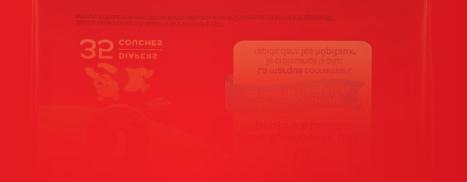










































Babies gently and comfortably spin round on their tummies, stretching and building upper body strength while exploring lots of squeaky, crinkly and tactile fun.










Using the put-in, take-out concept, these sea creatures help develop coordination and are full of textures to explore.







Mortimer's squeaker tummy and clacking tail rings stimulate the senses and his large, textured antlers are perfect for teething.





With textures, patterns and sounds, these stacking rings help baby develop dexterity and hand-eye coordination.




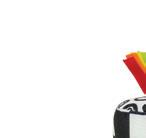
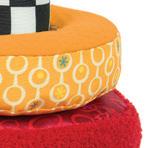




The Lamaze Infant Development System ® is designed in conjunction with child development experts focused on “The Right Toy at The Right Time”. With a 20+ year heritage in infant play, our toys encourage bonding through play at every stage of your baby’s development.










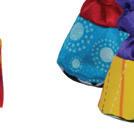



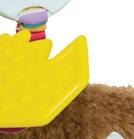




Your purchase supports Lamaze International, a nonprofit organization with a simple goal. We want all parents to feel confident, supported and powerful as they ask questions, make decisions, and navigate through pregnancy, birth and parenthood. Learn more at lamaze.org.








You’re fine one minute and the next you’re tired, achy and feeling like you just want to curl up and sleep off whatever is affecting your body.
Women typically aren’t prepared for recovery from childbirth. Here’s what you can expect.
Strategies for inducing lactation for adoptive parents.
Pregnancy, birth and aging can take their toll on our pelvic floor strength; light or heavy bladder leakage are often the first signs of a weak pelvic floor.
With so much interest in plant-based eating these days, it’s easy to get overwhelmed. Here’s where to start.


What was once designed almost exclusively for moms is now available in colors and options suited for perfectly modern parents—especially dad!
25 1st
From pregnancy tests to morning sickness, here’s how it all begins.

28 2nd Trimester: Welcome to Middle
Soon you’ll be half way to term!
31 3rd Trimester: Finish this Pregnancy Marathon Strong
Let baby pick their birthday.
Every parent has questions about bathing their baby—you’re not alone. Here are the most common questions nurses receive—and our best advice. Suds up!
39
At some point in your pregnancy the reality strikes that this baby will need to birth, which is both exciting and frightening!
Your little one is ready to snuggle, feed and feel the warmth of your skin against theirs.
If you’ve never experienced cesarean, then the recovery process can be somewhat of a shock. Cesarean is major surgery; you’ll need at least 4-6 weeks for your incision and body to heal—and that’s while taking care of your newborn!
Here’s why your care provider regularly checks on baby’s heart rate and rhythm.
What if you learned that the everyday act of diapering could promote and support your baby’s health and development?
Why does your baby startle all of a sudden? The answer lies in the Moro reflex.
Here’s what baby may be doing during their first 4 months.


Inducing lactation is an option some LGBTQ families may consider when becoming parents to a newborn. Here’s our guide to the full spectrum of choices, including co-nursing and bottlefeeding breastmilk, for lesbian, gay and transgender families.
35 FEATURE



 HEALTHY MOM&BABY EDITORIAL ADVISORY BOARD
HEALTHY MOM&BABY EDITORIAL ADVISORY BOARD
DANIELLE BEASLEY, DMSN, RNC-OB University of South Florida Tampa, FL
ROBERTA DURHAM, RN, PhD California State University East Bay Hayward, CA
JOANNE GOLDBORT, PhD, RN Michigan State University East Lansing, MI
HELEN M. HURST, DNP, RNC-OB, APRN-CNM University of Louisiana School of Nursing Lafayette, LA



ELIZABETH JORDAN, DNSc, RNC FAAN University of South Florida College of Nursing Tampa, FL
CAROLYN “CARRIE” LEE, PhD, MSN, CNE, RN University of Toledo College of Nursing Toledo, OH
JENNIFER LEMOINE, DNP, APRN, NNP-BC University of Louisiana at Lafayette Lafayette, LA
PARIS MALOOF-BURY, MSN, CNM, RNC-OB, IBCLC Sutter Health Sacramento, CA
RACHEL NAPOLI, DNP, CNS, RNC-OB, IBCLC Sonoma State University Rohnert Park, CA
RITA NUTT, DNP, RN Salisbury University Salisbury, MD
SUSAN PECK, MSN, APN Summit Medical Group Cedar Knolls, NJ
MICHELE K. SAVIN, DNP, APRN, NNP-BC Thomas Jefferson University Philadelphia, PA
PAT SCHEANS, MSN, NNP Legacy Health System Portland, OR
JAMIE M. VINCENT, MSN, RNC-OB, C-EFM John Muir Medical Center Walnut Creek, CA
HEATHER WATSON, BSN, MSN Johns Hopkins University Baltimore, MD
LASHEA WATTIE RNC, C-EFM, BSN, M-ED Wellstar Health System Atlanta, GA
KIMBERLY WILSCHEK, RN, CCE Medical Revenue Solutions Chicago, IL

CHARLOTTE WOOL, PhD, RN, CCNS York College of Pennsylvania York, PA
AWHONN’s mission is to improve and promote the health of women and babies. Healthy Mom&Baby is powered by the nurses of AWHONN.
 BY CHERYL ROTH, PHD, WHNP-BC, RNC-OB, RNFA
BY CHERYL ROTH, PHD, WHNP-BC, RNC-OB, RNFA

Regular prenatal care across the full 40 weeks of pregnancy is important for you and your baby to have the healthiest pregnancy and birth possible. Research shows a positive relationship between regular health care during pregnancy and improved outcomes for both moms and babies.
Most expectant moms will have 10-12 prenatal care visits while pregnant. At each visit, you’ll learn about any risks that could affect your pregnancy, watch how your baby is growing, get screened for any medical issues that could arise such as gestational diabetes or high blood pressure (preeclampsia), and discuss your plans and preferences for your baby’s birth. Your care provider will also calculate your estimated due date, which will be set at 40 completed weeks from the fi rst day of your last menstrual period.
At each visit, your pregnancy care provider will check on your health and baby’s progress. And you’ll have the opportunity to get your pregnancyand birth-related questions answered. Your care provider will listen to your baby’s heartbeat and measure how your uterus is growing. Hearing baby’s heartbeat at each visit is exciting; second only to seeing baby via ultrasound. Many women and their partners say they “bond” with their babies when they can hear their heartbeat, feel baby move or kick or see baby in the womb via ultrasound.

Most prenatal visits occur monthly through the fi rst 27 weeks of pregnancy, every two weeks during weeks 28-36, and are then typically weekly from week 37 til birth. Most healthcare providers begin to see pregnant women after their 8th week of pregnancy. If you have had issues such as preterm labor or miscarriage in a previous pregnancy, or if you have an existing healthcare problem such as high blood pressure or diabetes, your healthcare provider may advise you to begin prenatal care earlier.
Some moms choose group prenatal care, which allows you to connect with other pregnant moms while you also receive individual medical care at each visit. Centering Pregnancy is a popular group prenatal care program, and many of the nurses of the Association of Women’s Health, Obstetric and Neonatal Nurses (AWHONN), which publishes this magazine, support expectant moms through educational classes where you may plan to birth and through group prenatal care.
Regardless if you choose private or group prenatal care, it’s a great idea to bring your partner, or a close relative or friend to each prenatal care visit—and keep every prenatal appointment for the healthiest pregnancy possible!
CHERYL ROTH, PHD, WHNP-BC, RNC-OB, RNFA, is the AWHONN 2019 President.This the first time there’s ever been you, so I wonder what wonderful things you will do. . . .


Your baby’s doctor knows what is best for their health, but only you know what is best for their heart and mind.
In the #l New York Times bestselling picture book, Emily Winfield Martin celebrates every individual child and the infinite possibilities ahead of them. For









Is your baby getting enough vitamin


Vitamin D is known for supporting normal bone and teeth development as well as muscle strength. Vitamin D helps the body use calcium and phosphorus from our diet to build and maintain strong bones and teeth.*
The American Academy of Pediatrics and The National Academy of Medicine recommend that all breastfed, healthy term babies receive a daily vitamin D supplement of 400 IU.



Is













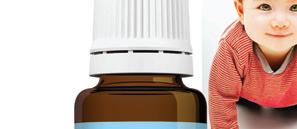



Baby Ddrops® 400 IU are a purified vitamin D3 supplement specifically designed for breastfed infants. They contain only two ingredients; purified coconut oil and vitamin D. Simply apply just one drop where baby feeds, or onto a clean surface such as a washed fingertip. There’s no taste, so the vitamin D drops don't interfere with feeding.**

Made for everyone.

he perfect addition to any nursery library with its loving and inspiring message
AWHONN 2019 President
Cheryl Roth, PhD, WHNP-BC, RNC-OB, RNFA
Chief Executive Offi cer

M. Suzanne C. Berry, MBA, CAE
Vice President, Strategic Partnerships, Communications & Meetings


Billie Robinson, MBA, CAE
Editor-in-Chief & Senior Director, Strategic Partnerships & Publications


Carolyn Davis Cockey, MLS, LCCE
Director of Patient Education


Catherine Ruhl, CNM, MS

Just as trends in baby fashion come and go, so do fashionable pregnancy websites, and we’ve got a new look we’re excited to share with you at Health4mom.org! Designed to be as stylish as modern moms and as relatable as your best friend, check out some of the new features, including:




✿ Mommy Baby Blog —stories from real moms just like you and their pregnancy adventures ✿ Diapering Zone —and turn an ordinary task into something extraordinary ✿ Go The Full 40 weeks of pregnancy, with encouragement week by week ✿ Digital edition —read every issue of Healthy Mom&Baby free!

You have so many choices about where you receive information and education about your pregnancy. Healthy Mom&Baby is written by the nurses who are with you on your pregnancy journey, who teach the childbirth and education classes you’ll take toward the end of your 2nd trimester, and who will be with you as you labor and birth your precious little one.
In our “Ask a Nurse” section you can get expert answers regarding conception, pregnancy, birth, breastfeeding and parenting from an AWHONN nurse! For more than 17 years, nurses have topped the Gallup poll as the “most trusted” healthcare professionals—you can trust the advice and education you receive from nurses in Healthy Mom&Baby




Printed in the United States on paper made with 30% post-consumer recycled fiber. Please recycle this magazine!

Healthy Mom&Baby is published by Maitland Warne in partnership with AWHONN.

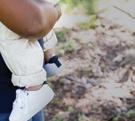


© AWHONN, 2019. All rights reserved. All material in Healthy Mom&Baby is wholly copyright. Reproduction without the written permission of the publisher is strictly forbidden.
Neither this magazine nor its contents constitute an explicit or implied endorsement by AWHONN or by Maitland Warne of the products or services mentioned in advertising or editorial content. The editorial content in this publication does not necessarily represent policies or recommendations by AWHONN. This publication is not intended to be exhaustive. While every effort has been made to ensure accuracy, neither AWHONN nor Maitland Warne shall have any liability for any errors or omissions. Readers who may have questions should consult their healthcare provider.
PUBLISHER
MAITLAND WARNE 123 W Madison Street, Suite 1600, Chicago, IL 60602, USA Tel: (312) 572 7729 www.maitlandwarne.com

AWHONN Carolyn Davis Cockey, MLS, LCCE carolyndc@awhonn.org 3 Shoreland Drive Osprey, FL 34229 Tel: (800) 673-8499 x 1464 www.AWHONN.org

In these pages, there’s advice regarding each major trimester of pregnancy—including your important recovery postpartum, also known as the 4th trimester, starting on p. 25. Education on preparing for labor is on p. 39, and tips on how to recover from cesarean birth starts on p. 45. And, we help you prep for changing nearly 10,000 diapers on p. 58 (yes, we said 10,000 diapers!). You and your baby are on a wonderful journey together; and the nurses of Healthy Mom&Baby are here to advise you. Find us anytime at Health4mom.org.





















































Most pregnant moms know 6 weeks has been the typical time recommended to delay intercourse postchildbirth. However, some moms want sex earlier, still for others those desires haven’t yet returned at 6 weeks, says Andrea DeMaria, assistant professor in Purdue University’s College of Health and Human Sciences who recently asked women about their postpartum sexual preferences.
“Some women were ready before six weeks due to personal and partner desire, while other women expressed difficulties resuming sex, including pain and exhaustion from caring for a new baby,” DeMaria said.
ACOG recommends a postpartum check up with your pregnancy care provider at 3 weeks, which is meant to help catch pregnancy complications leading to increased maternal deaths in the U.S. Discussing your own readiness to resume sex postpartum at this visit can help new moms identify what’s individually best for them, the researcher shared.
There isn’t a “one-size-fits-all” approach to sex after childbirth, DeMaria advised, adding that women in the study significantly differed in how they experienced postpartum sexual desires and pleasures for reasons related to how they birthed—vaginally or via cesarean— to body image and confidence in recovery after birth.

Want to skip the problems of sunburn, premature skin aging (think skin spots, wrinkles or “leathery” skin), eye damage and skin cancer, the most common of all cancers? Use both sun-safe sunglasses and sunscreens every day, say FDA experts.
People who use a combination of nicotine replacement therapies (think the patch plus a gum or lozenge) are more successful in quit smoking than people who use only one nicotine replacement, research shows.
Higher-dose nicotine gum (4mg) is more effective when quitting than 2 mg gum; and higherdose nicotine patches (21mg or 25mg) made it more likely a person could quit smoking than lower-dosed patches, said experts at the Cochrane Library, who analyzed the research and also observed that using two forms of nicotine replacement at one time didn’t create any harms.
People of all skin colors are at risk for sun damage; reduce your risks with the following:








Limit time outside when the sun is strongest: 10 am-2 pm Wear sun-protective clothing including broad-brimmed hats
Use broad-spectrum sunscreens with an SPF of 15+ for everyone ages 7 months+ (use infant and child-safe sunscreens on youngsters) Wear sunglasses that block 100% of UVA and UVB rays, two types of ultraviolet radiation












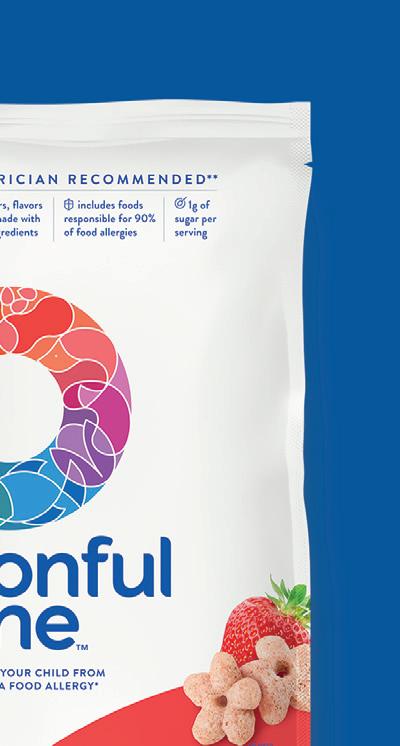






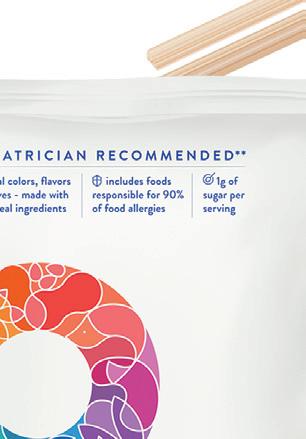









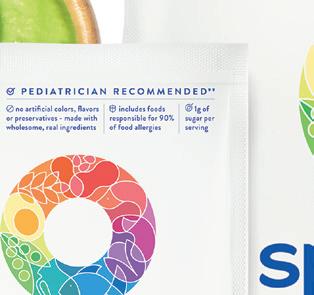





You’re fi ne one minute and the next you’re tired, achy and feeling like you just want to curl up and sleep off whatever is affecting your body.
Are you fighting an oncoming cold? Allergies? Or could it be the flu? Use our symptom guide developed by federal health experts to start you on your way to a healthy rest and recovery.

Never FEVER
Not typical; if so, lower than 100 o F
Yes, higher (100 o F+), especially in young children; up to 3-4 days
HEADACHE No No Yes ACHES, PAINS FATIGUE, WEAKNESS Never Slight Yes, often severe Sometimes Sometimes Yes, up to 3 weeks EXTREME EXHAUSTION Never Never Yes, especially at onset STUFFY, RUNNY NOSE Yes Yes Sometimes SNEEZING Yes Yes Sometimes
SORE THROAT Sometimes Yes Sometimes COUGH Sometimes Yes
CHEST
TREATMENT
No, unless you have allergic asthma
Avoid things you’re allergic to; use antihistamines, nasal steroids, decongestants
Avoid allergens: pollen, dust, mites, mold, pet dander, cockroaches, to name a few
Sinus infection, middle ear infection, asthma
Source: National Institutes of Health
Yes, can become severe
Sometimes Yes
Lots of rest and fluids for hydration, use decongestants and pain relievers for aches; aspirin in people ages 18+ only
Wash your hands often and avoid close contact with other people
Sinus infection middle ear infection, asthma
Lots of rest and fluids for hydration, use decongestants and pain relievers for fever and aches; aspirin in people ages 18+ only; ask about antiviral medicines at onset
Get the flu vaccine each year; wash your hands often, and avoid anyone who has the flu
Bronchitis or pneumonia, which can be life-threatening








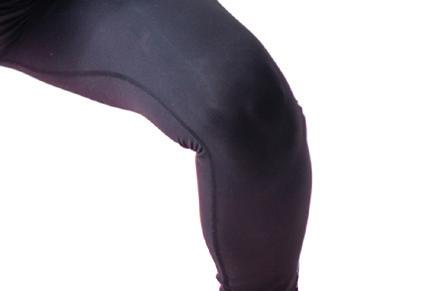


























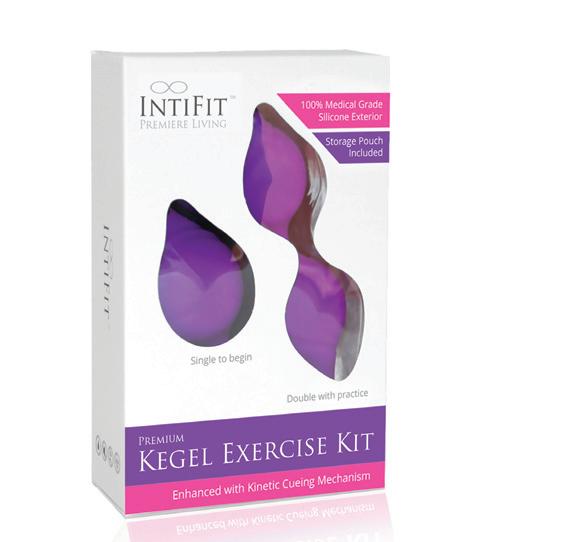



































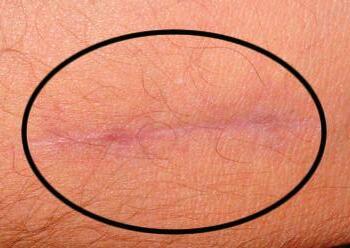

 By Paris Maloof-Bury, M s N, CNM, r NC- o B, i BC l C
By Paris Maloof-Bury, M s N, CNM, r NC- o B, i BC l C
Twenty-five years after the birth of my first child, I can still remember how awful I felt. Sure I was excited about this beautiful baby girl that had miraculously and painfully emerged from my body. But I wasn’t prepared for the icky feelings from my body that followed. And I’m a nurse and midwife!
Women typically aren’t prepared for recovery from childbirth, according to research published in Obstetrics & Gynecology. Some women told researchers this lack of preparation left them feeling less satisfied with their healthcare providers and compelled some to skip their postpartum check-ups.
Fewer women are taking childbirth courses, and recovery from pregnancy, labor and birth can almost seem like a marathon! Experts estimate that as many as 40% of mothers are skipping postpartum care, which can put moms at risk especially if they’re dealing with chronic health conditions such as diabetes or high blood pressure.
Whether baby is born via vaginal or cesarean birth, prepare for your body’s recovery by having these supplies on hand in the hospital and at home:
B Common pain relievers
B Postpartum wrap or a pillow for counterpressure against a cesarean incision
B Heating pad or wrap to ease fullness in your breasts and help with soreness
B Period pads from heavy to light until your bleeding ends
B Hot and cold packs at your preference to relieve painful and sore areas
B Lanolin for nipple chapping, cracks or soreness with breastfeeding
B Witch hazel for vaginal pain or hemorrhoids
B Stool softener helps get you moving again postbirth
B Sitz bath for soothing pain
B Squirt bottle to rinse your perineum after urinating to aid healing
thing
Women typically aren’t prepared for recovery from childbirth. Here’s what you can expect.
Your
ACOG now recommends that postpartum care should be an ongoing process, rather than a single visit at 6 weeks postpartum, and that all women have a follow up appointment with their pregnancy care provider within the first three weeks postpartum. Contraception to avoid a subsequent too-soon pregnancy after birth is typically upmost of mind for most pregnancy care providers but not all moms, and managing health complications post-birth is important for mom’s health.
If you birthed vaginally, expect to spend 1-2 days at the hospital post-birth, and if all goes well, resume regular activities as your body feels ready to do so. If baby was born via cesarean, you’ll spend up to 3-4 days in the hospital and it will take up to 6 weeks or more for you to recover from this major abdominal surgery. Still, no two moms recover the same way, and no one knows your own body better than you—so listen to those twinges, pains and sore areas—and be gentle and nurturing with yourself after birthing.
Labor is short, relatively speaking, and followed by a much longer recovery period. Healthcare providers focus so much on prenatal care and often skip over what happens following childbirth. But you can change this, and we’ve got just the list of questions for you to bring to your next prenatal appointment.
In the rush to get out of hospital, you may forget or simply fail to ask these questions, and then wonder if what you’re experiencing at home is “normal.” Take notes now to prevent anxiety once you’re tucked away safely at home with that new wiggly bundle that is your baby.

B How much will i bleed after birth ? What’s normal? How much bleeding is too much and who do i call if that happens?
B What should i expect my perineum (“down there”) to feel like after birth?
B i f i have an episiotomy or tear, what will that feel like as it’s healing, and how do i help promote healing?
B What are “after pains” and how long may they last?
B How soon should my abdomen return to its pre-pregnancy shape and size? What will it feel like immediately after birth?
B What changes can i expect in my breasts if i ’m breastfeeding? i f i decide not to breastfeed, how do i care for my breasts, and how will they feel?
B How do i prevent engorgement in my breasts when breastfeeding?
B Will i be able to use the bathroom as normal? When will elimination be normal again? What problems should i look for?
B What’s the best way to lose the pregnancy weight?
B How soon can i start exercising again? a re any exercises off limits following birth?
B What about sex after birth? How soon can i resume intercourse, and is there anything special i need to know about or plan for?
B i s there anything i should avoid doing for any period of time following baby’s birth, and if so, what and why?


Queasy Beads™ bracelets are a natural, drug-free way for moms to relieve nausea, queasiness and anxiety before, during and after pregnancy.




Queasy Beads™ are handcrafted and custom-designed for a perfect fit. Unlike other nausea relief wristbands, Queasy Beads™ are also stylish accessories that can be worn anytime, anywhere!
Wearing Queasy Beads™ bracelets is a natural,stylish way for moms to take care of themselves before,during, and after pregnancy.

“Queasy Beads™ are amazing! I would definitely recommend them to any mom-to-be!”



“Queasy Beads™ worked like a charm for my morning sickness!”

“Not only are these a fashionable accessory,they work! I used these beads for morning sickness and they worked so unbelievably well!”


Introducing the most gentle & ecofriendly way to cleanse your new baby’s head, shoulders, knees and toes. Our extra-finely textured skin polishers are made with purified water, organic plants and flowers— only. The root from the Konjac plant is the base of all of our skin polishers. No need for soaps or shampoos, Konjac cleans, gently exfoliates and balances the pH of the most delicate of skin.
If you’re concerned about caring for cradle cap, eczema and newborn skin irritations, Konjac is the answer to soothing them all. No need for scratchy washcloths, non-biodegradable silicone or synthetic products. This incredible root vegetable has been nourishing and healing people for over 1500 years. It is dye-free, preservative-free, Leaping Bunny approved, compostable, and loveable— just like baby!




Organic Konjac Skin Polishers are perfect for new mommy self-care too.






Proven to be safe and e ective
Did you know that you can still breastfeed your baby even if you did not give birth to them? Even if you were never pregnant? When it comes to matters including adoption or surrogacy, it’s important to know what your infant feeding options are so that you can make an informed choice.
There is nothing in the world like snuggling up close with your little baby and feeling the warm rush of oxytocin (the glorious love hormone released while breastfeeding) while your child is nourished and comforted at your breast. The hormones and the closeness involved with breastfeeding facilitate bonding, and this enhanced bonding alone is enough of a reason for many parents to choose breastfeeding, especially in cases of adoption and surrogacy.
Most biological mothers in the U.S. choose to breastfeed, and for good reason. Not only is breastfeeding less expensive than formula feeding and better for the environment, but it offers significant health benefits for both you and your baby.
Breastfeeding reduces baby’s risk for ear infections, respiratory tract infections, diarrhea, asthma, allergies, obesity, diabetes, sudden infant death syndrome (SIDS), and leukemia, and other things, say experts at the American Academy of Pediatrics (AAP). Breastfed babies tend to get sick less often; and when they do get sick, they get better faster, and are less likely to require hospitalization and antibiotics. And breastfeeding your adopted baby is recommended by the AAP.
Breastfeeding protects you too, mom! Women who breastfeed have a lower lifetime risk of heart disease, rheumatoid arthritis, breast and ovarian cancers, high cholesterol, high blood pressure, osteoporosis, and diabetes. Again, breastfeeding can’t guarantee you will never get sick, but it does promote your overall health.
Inducing lactation involves using medications and hormones to mimic the complex interaction of three hormones: estrogen, progesterone and human placental lactogen, say experts at the Mayo Clinic. This is followed by frequent breast pumping with a high quality double electric breast pump and herbs (fenugreek and blessed thistle). You will need the support of your pregnancy care provider and a lactation specialist. Depending on how lactation is induced, it can typically take up to six months.
Not all women who induce lactation will be able to exclusively breastfeed; many will need to supplement their baby’s nutrition. That’s OK! The benefits of breastfeeding are dose-dependent. This means that the more the baby is breastfed, the better, and even a little breastmilk goes a long way. Each drop of your milk is loaded with antibodies to fight infection and perfectly proportioned nutrition to help your baby grow strong and healthy.
Some women supplement with donor breastmilk or infant formula. The World Health Organization’s Global Strategy for Infant and Young Child Feeding advises, “for those few health situations where infants cannot, or should not, be breastfed, the best alternative is expressed breast milk from an infant’s own mother, breast milk from a healthy wetnurse or a human-milk bank, or a breast-milk substitute.”
In deciding whether to supplement your baby with donor breastmilk or formula, it’s important to consider the inherent risks in both choices, as well as your access to and the availability of donor milk. Both infant formula and donor milk can be contaminated with viruses or bacteria. Both can be contaminated with harmful chemicals. And the safety of both methods can be affected by poor hygiene practices.
Alternatively, some women are concerned about the prospect of milk sharing and donor milk because of the potential for transmission of viruses such as HIV. This is a very reasonable concern. Some women who participate in milk sharing perform at-home pasteurization to eliminate the risk of HIV transmission. Flash heating involves placing milk in a glass container that is then placed in water. The water is heated to a rolling boil before the jar is removed and allowed to cool. Flash heating has been found to inactivate any HIV present in breast milk while having only a small impact on the nutritional and immunologic properties of the milk, according to the National Center for Biotechnology Information and the Australian Medical Journal .
An International Board Certified Lactation Consultant (IBCLC) can be a valuable expert to help you navigate induced lactation and breastfeeding in partnership with your healthcare provider. Find a consultant at icla.org.
nursing your adopted baby is recommended by pediatricians.















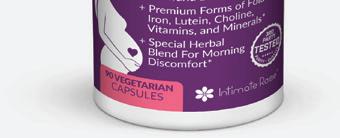



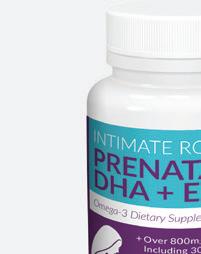


During your regular pelvic exam, your nurse or healthcare provider may ask you to squeeze your pelvic floor muscles; they want to check their tone—or how much your muscles resist stretching when they’re resting. Since your whole pelvic floor is supported by muscle, you can strengthen it.
Maintaining good pelvic floor muscle tone is critical to preventing or improving bladder leakage. You’re not alone if you’re not sure how to contract your pelvic floor. Pelvic floor exercises are the easiest way to strengthen these muscles, as are Pilates exercises, which strengthen your core. According to the Mayo Clinic, perfecting pelvic floor exercises is key to making bladder leakage a thing of the past.
Many of us forget to do daily pelvic floor exercises, so it’s helpful to create mental reminders—like doing a set at every red traffic light or during a TV or radio commercial. At first, squeezing these muscles may feel odd, but you’ll get used to it. And it’s safe and important to keep your pelvic floor strong during pregnancy.

If you’re doing pelvic floor exercises correctly to minimize bladder leakage, no one will know. Make it your secret exercise!
X Find the right muscles. To identify your pelvic floor muscles, stop peeing midstream. If you succeed, you’ve got the right muscles. Once you’ve identified your pelvic floor muscles, you can do the exercises in any position, although you might find it easiest to do them lying down at first.
X Perfect your technique. Tighten your pelvic floor muscles, hold the contraction for 5 seconds, and then relax for 5 seconds. Try it 4 or 5 times in a row. Work up to keeping the muscles contracted for 10 seconds at a time, relaxing for 10 seconds between contractions.
X Maintain your focus For best results, focus on tightening only your pelvic floor muscles. Be careful not to flex the muscles in your abdomen, thighs or buttocks. a void holding your breath. Instead, breathe freely during the exercises.
X Aim for at least 3 sets of 10 repetitions a day.
Pregnancy, birth and aging can take their toll on our pelvic floor strength; light or heavy bladder leakage are often the first signs of a weak pelvic floor.
Per F ecting P elvic F loor exercises is key to MA king bl A dder le A k Age A thing o F the PA st let red remindlights you to do a set of pelvic exercises!floor
If you’re overweight or obese, just losing 5 to 10 pounds can relieve some abdominal pressure on your bladder. Maybe you’ve recently had a baby and noticed that any bladder leaking diminished as you lost the baby weight. Also, reduce the amount of bladder irritants you’re taking in, such as caffeine or alcohol each day, and don’t let your bladder get too full—even on busy days.
So what if you’ve regularly done your pelvic floor exercises, lost some weight, and curbed the caffeine but the bladder leakage isn’t getting any better? You should definitely talk to your nurse because for some women referral to a physical therapist (PT) who specializes in pelvic floor/women’s health might be necessary. Yes, there are actually PTs who specialize in this important muscle group!
If you need this specialized PT, what should you expect? First, you’ll review your health history: how many pregnancies you’ve had, how much your babies weighed, what makes the leakage better or worse and if you’re taking any medicines that could irritate your bladder.

The PT will evaluate your posture, back and hips and may ask your permission to do an internal exam to better check your tone, but this won’t involve any equipment like a speculum. You’ll probably be given a specialized treatment plan of home exercises and be asked to return for follow up evaluation and care.
If these efforts don’t seem to help, you may need a urogynecologist—a gynecologist with a subspecialty in pelvic floor medicine. This type of specialist may offer other treatments including surgery but not all women will need surgery for better bladder health.
Maybe you’re on a jog or simply sneezing and you feel a small amount of urine dribble out—you can’t stop it. What is happening? Could this be incontinence? After all, you only had one vaginal birth—you might be asking yourself, “Should I be leaking urine at such a young age?”
Truth is light bladder leakage can happen for women at any age, regardless of previous pregnancies or births, even if you’ve had cesarean. Leaking urine is more common than you might think—there are ways to cope with light bladder leakage.
Wh At i S light bl A dder le A k Age?
B Light bladder leakage (LBL) is urine loss you can’t control, which is called incontinence. 1 in 4 women experience it, and the two most common types are stress incontinence and urge incontinence—some women have both types.
B Stress incontinence is leaking urine during activities that put pressure on your bladder like coughing, running, jumping or sneezing. It happens when your pelvic floor muscles—the muscles that support your bladder—are weak, such as from pregnancy, previous vaginal birth, or being obese or overweight. Still, it can happen without any of these risk factors.
B Urge incontinence is the frequent, sudden need to pee that often causes bladder contractions and leaking small or moderate amounts of urine. Caffeine, alcohol, drinking too much water and medications like diuretics (water pills) or neurological conditions can irritate your bladder, leading to urge incontinence. Maybe you’ve heard it called overactive bladder.
Please don’t ever be embarrassed by light bladder leakage, it’s common and you’re not alone. Talk to your nurse about it, even if they don’t ask. You can build up your pelvic floor to prevent light bladder leakage.



As a mother of two, and vegetarian for more than 20 years, I never imagined a time when there would be so much interest in plant-based eating. e easiest way to start is to fi ll half of your plate with vegetables at each meal.



Fruits and vegetables contain fiber to help foster a healthy community of gut bacteria and prevent constipation. ey’re also packed with vitamins, minerals and phytochemicals that fi ght infl ammation. Include at least two vegetables at each meal, which helps you fi ll up without eating more calories than you need. For many recipes, simply double the amount of vegetables to pack in more nutrition.





Beans and tofu are protein-rich options that help you replace animal proteins. ree-quarters of a cup of cooked lentils contain 13 grams of protein, along with plenty of iron. Beans are so aff ordable and easy to use, and lentils make a great stand-in for ground beef in spaghetti or tacos. Add chickpeas to soups and salads or mash them and use in place of tuna, which can contain mercury, in sandwiches.
Many women snack on nuts or spread nut butters on toast, but seeds don’t often get enough love. Hemp, chia and fl ax contain valuable omega 3 fatty acids and just one tablespoon of ground fl ax is an aff ordable way to get all of the omega 3 alpha-linolenic acid you need in a day.

Sprinkle omega 3-rich seeds on smoothies, cereals or yogurt, or stir into soups just before eating. Hemp bakes well into muffi ns and quick breads, where you can easily substitute one half cup of the recommended flour with hemp seeds.
Pumpkin seeds are a great snack high in protein—11 grams per half cup—and they contain essential fatty acids and zinc, which are critical for supporting your immune system. I carry pumpkin seeds and dried cherries in my bag so I always have an emergency snack when the hangries hit!
You can get all of the protein you need each day from plants. is daily plan includes 77 grams of plantbased proteins:


Breakfast: 1 cup cooked oatmeal with 3 tablespoons hemp seeds, 1 cup fruit and 1 cup soymilk: 23g
Lunch: Kale salad with 1 cup lentils: 19g
Snack: One–quarter cup almonds with sliced apple: 8g

Dinner: One–quarter of a 350g package of tofu served with stir-fried vegetables and 1 cup of cooked wheat berries: 23g
Dessert: Hot cocoa made with 1 cup oat milk: 4g

With so much information about plantbased eating these days, it’s easy to get overwhelmed. Here’s where to start:















The award-winning ErgoErgo allows expectant moms to sit actively, the way nature intended. Our bodies were made to move! The safe, sturdy ErgoErgo is recommended by maternity experts everywhere.
On ErgoErgo, you can easily adjust your pelvic tilt to make room for your growing belly. Shift to a more comfortable position. Strengthen your core muscles and pelvic floor. Reduce pressure on your lower back.

You can relax on ErgoErgo. Breathe more deeply. Improve your blood circulation and energize your legs. You and your baby will be soothed by gentle movement. And because active sit-

























ting sends more blood and oxygen to the brain, you’ll feel more awake and energized.










After your baby is born, it’s the perfect way to peacefully rock your baby while regaining your abdominal strength and pelvic resilience.


Proudly made in the USA of recyclable techno polymer, ErgoErgo is easy on the budget. It comes in two adult sizes: the original ErgoErgo and ExtraErgo with a wider seat. With its durable quality and timeless design, you can sit happy for many years.
Learn more at www.ergoergo.com. Contact us at sales@ergoergo.com.




Mom, your world forever changes once baby is born. In the year after birth, your priorities transition away from pregnancy care to your new baby, a time called the “fourth trimester.” AWHONN, the nursing organization that publishes this magazine, ACOG and the CDC are encouraging moms to follow up with their pregnancy care providers as early as 3 weeks postpartum to make a plan for their health and recovery and learn warning signs they should watch for post-birth:
Pain in your chest
Obstructed breathing or shortness of breath









Seizures
Thoughts of hurting yourself or baby
Bleeding that is soaking one pad/hour, or blood clots the size of an egg or bigger
Incision that isn’t healing
Red or swollen leg that is painful or warm to touch
Temperature of 100.4 oF or higher
Headache that doesn’t improve, even with medicine, or a bad headache with vision changes
1 in 3 women don’t think cannabis is harmful to a developing baby.

As many as 1 in 3 pregnant women simply do not believe cannabis is harmful to their developing baby, say researchers at the University of British Columbia, and this is especially true if their pregnancy care providers don’t warn them of the known harms, the study shows.

Few pregnant women (4-7%) reveal pot use to their provider. Rather, pregnant women told researchers the substances they thought most likely to harm their baby during pregnancy were alcohol (70%) or tobacco (16%).

It’s not just you, mama—many pregnant women feel pushed out of their jobs and forced to alter their careers, while dads get a boost from becoming a father, say researchers at Florida State University, adding that the “motherhood penalty” and “fatherhood premium” can be attributed to outdated stereotypes that favor fathers as breadwinners and women as caregivers.
Expectant moms received reduced career encouragement at work, experienced lower motivation to stay with the organization or in the workforce, but fathers say the opposite effect, the study showed. Fathers received career encouragement from colleagues and managers and expressed being more committed to their work.
1 in 5 women said they have experienced negative comments related to pregnancy or flexible workings arrangements.




Welcome to your fi rst and sleepiest trimester; during these 12 weeks your baby will grow from an embryo 1/5th the size of the period at the end of this sentence to the size of a plum. Every day, the pregnancy hormone HCG is increasing and it’s what makes your pregnancy test positive. It’s also responsible for feeling tired, tender or sore breasts, frequently needing to pee and for many women—morning sickness. It’s normal to want a nap every day—your body is working hard to grow your baby—it’s exhausting!


Before you knew you were pregnant, baby’s neural tube— what becomes their brain and spinal cord—formed and closed.
e 800 micrograms of folic acid in most prenatal vitamins protect against neural tube birth defects, so it’s important to take a prenatal vitamin before conception and through pregnancy and breastfeeding.
Baby fi nishes the 1st trimester 10 times bigger than at conception. Your body is changing too: Your breasts are likely bigger and sore, you may have frequent headaches, fatigue and nausea. It’s not unusual to have some spotting or mild cramping and this doesn’t always mean miscarriage. Call your provider right away, especially if the bleeding is heavy or if you’re cramping.

Underweight 18.5 28-40
Normal weight 18.5-24.9 25-35 Overweight 25-29.9 15-25 Obese ≥30 11-20
Source: Institute of Medicine
You may be offered 1st trimester screening—non-invasive tests done between weeks 11-14 for chromosome disorders like Down Syndrome and genetic testing. Your nurse can talk with you about the risks and benefits of these tests. Bring your questions to every prenatal visit—your care providers expect and welcome them!

As you complete week 12, you can relax—your baby’s organs and bodily systems have formed and will continue to develop and grow during the next 28 weeks. You’ll be able to hear your baby’s heartbeat and the early symptoms of pregnancy should begin to subside.
How muc H weig H t s H ould i gain in pregnancy?
It’s important to gain just the right amount of weight in pregnancy: Not too little, not too much. Follow these simple strategies to nourish you and baby together:
✿ No one food combats morning sickness; smaller meals eaten more frequently seem to help
✿ Eat 3 servings of protein daily, such as lean meats, low-mercury fish, nuts, beans, milk or eggs, to support your growing baby
✿ Eat no more than an extra 100 calories a day—that’s a small apple and 6 ounces of skim milk
✿ Bulk up on fruits, veggies and water to combat constipation
plan to c arry Ba By Full t erm
Commit to go the full 40 weeks of pregnancy, wait for spontaneous labor and breastfeed your baby. Discover 40 reasons to go full term at GoTheFull40.com.
SuSan Peck, MSn , a Pn , is an advanced nurse practitioner and expert adviser to Healthy Mom&Baby
cH oose a pregnancy-Friendly provider For pregnancy care, your provider may be a midwife, obstetrician or family practice doctor. Tour the facility where she or he will help you birth.

Use our checklist to gauge how your potential birth facility may match your goals for labor and birth. This list doesn’t cover everything, but for each ‘yes’ you can give, the greater the chances that you may be supported toward your desired birth.
Ask if the facility where your provider will help you give birth is committed to any of the following.
support normal birth with freedom to move around and equipment, such as birthing beds, to support upright labor and birth, birthing balls and showers or tubs for pain relief and labor support, limited use of electronic monitoring unless medically indicated, and staff to provide ongoing labor care i nduction or cesarean only when medically needed: You’re more likely to have cesarean surgery if the facility has cesarean rates above the national average (now 32%) rooming in: This keeps your baby with you 24/7, increasing your opportunities for breastfeeding and bonding
Breastfeeding as the optimal food and best way for you to feed your baby, including having expert lactation support available i nitiating breastfeeding as quickly as possible post-birth: Ideally, within the first minutes of life but within an hour for a normal, vaginal birth; and within 2 hours if you undergo cesarean
yes no yes no
yes no
s kin-to-skin care: This helps baby more rapidly stabilize their heart rate, temperature and respiratory rate, improve bonding and increase breastfeeding success
yes no
yes no yes no
Your baby needs at least a full 40 weeks of pregnancy to grow and develop. Inducing labor even a week or two early is associated with a host of risks, including prematurity, cesarean surgery, hemorrhage and infection.
While it may seem convenient for you or your health care provider, labor should only be induced for medical reasons.
Your baby will let you know when she’s ready to come out, so give her all the time she needs: at least the full 40 weeks.

During your second trimester, your little one grows from the size of a peach to an eggplant. You’ll have more energy, feel less sick and be hungry! At 13 weeks, your placenta starts producing the hormones that maintain your pregnancy, and it gives baby oxygen and nutrition and removes waste.
You begin to ‘show,’ happily trading jeans for maternity yoga pants! Other changes can include:
Around weeks 17-20 you may be surprised by flutters in your belly—that’s your baby moving! More exciting is your 2nd trimester ultrasound. Will you try to learn whether you’re having a girl or boy?
Between weeks 24-28, you’ll be checked for the most common pregnancy complication: gestational diabetes. As many as 1 in 10 women develop diabetes
B An energy burst—ask your nurse what exercises you can continue or begin in pregnancy
B Lower back pain as your uterus grows and changes your center of gravity
B Soreness or twinges along the sides of your belly as your uterus, stretches and moves higher in your abdomen
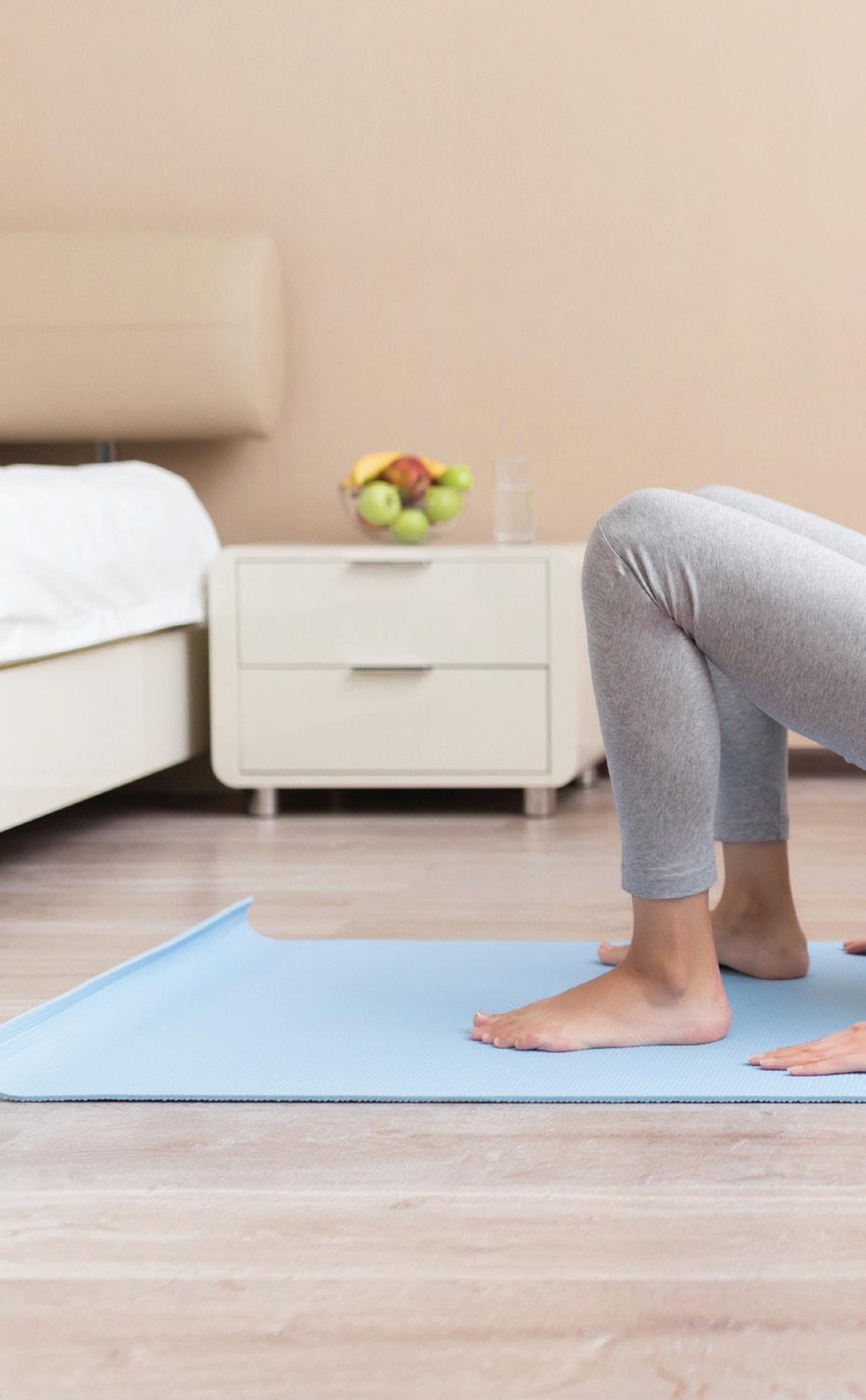
B Nasal stuffiness or even snoring from increased
hormones and blood flow; soothe with saline nose drops and a humidifier
B Varicose veins in your legs—even your vagina, from relaxed blood vessels and slower circulation; elevate your legs or wear support or compression stockings
B Itchy skin or stretch marks; belly butters and balms can ease the itching
in pregnancy. You’ll drink a sweet liquid and have your blood drawn 60 minutes later. If your 1-hour test is high, you’ll do a similar 3-hour test, but only 1 in 3 women who need that test will have gestational diabetes.
Around 27 weeks, ask for the Tdap vaccine, which protects against pertussis (whooping cough). In fact, everyone who will provide care for baby can help protect baby by getting a Tdap shot. Newborns don’t develop immunity against pertussis until they’re 2-3 months old and pertussis can be deadly in infants. Also, get a flu shot in pregnancy before flu season—this vaccine is safe in any trimester.
Your baby’s heart is beating fast—about 140-150 beats/minute, which is normal. Baby is sucking and swallowing amniotic fluid in preparation for nursing. Don’t be surprised when you feel baby’s hiccups! Their lungs are exhaling amniotic fluid, preparing for those first breaths after birth. Your baby can recognize your voices and will respond to them at birth.
Che C k on Ba BY: Coun T Their k i C ks
In a normal pregnancy, kick counts are
a great way to check in with your baby and reassure yourself that everything seems fi ne. Kick counts help you and your healthcare provider look for the fi rst signs of problems, even as early as 24 weeks. Your healthcare provider may ask you to do this, and for good reason: Decreased fetal movement has been associated with developmental delays in children and even stillbirth. It’s typical for healthcare providers to ask women with high-risk pregnancies to spend some time each day, usually just a few minutes, counting their baby’s movements.
Kick counts are easy; they just take a few minutes during which time you’re bonding with your baby. After a few sessions, you’ll get to know what’s normal—and not—for your little one.
Do kick counts every day when your baby is active. In your womb, your baby will have sleep cycles of up to 40 minutes. Baby will usually be most active after you eat, when you exercise or move around and in the late evening.
Find that time each day when baby seems most active. Stop what you’re doing, sit down, relax and pay attention to them. With your hands on your growing belly,

within 2 hours, say experts at the American College of Obstetricians and Gynecologists. If you don’t feel 10 movements, give your provider a call.

Of course, most babies will have 10 movements in a much shorter time. In fact, it may only take about 30 minutes to get to 10 movements. In one study, mothers counted 10 movements in an
✿ Hydration is key ; drink at least 8, 8-ounce glasses of water a day plus more during exercise
✿ Minimize heartburn by skipping spicy or heavy meals, acidic fruits like tomatoes or eating late at night
✿ Take in an extra 250 calories a day—up to 350 calories in the 3rd trimester—to maintain steady weight gain
✿ Pick high-protein snacks like eggs, nuts, cheese sticks or hummus
✿ Fill up on fiber in beans, bran or berries to keep your bowels regular
average of 10 minutes—those babies were on the move! Even the busiest mom can fi nd 10 minutes to sit quietly and get to know her growing baby. Once you count 10 movements, you’re done!



Your baby needs at least a full 40 weeks of pregnancy to grow and develop. Inducing labor even a week or two early is associated with a host of risks, including prematurity, cesarean surgery, hemorrhage and infection.
While it may seem convenient for you or your health care provider, labor should only be induced for medical reasons.







Your baby will let you know when he’s ready to come out, so give him at least a full 40 weeks.












In these last weeks, your baby is growing more each day as they prepare to meet you—which means as they grow you also get more uncomfortable. Your baby is blossoming from the size of a butternut squash to a large watermelon at birth. Baby’s weight will more than double during this trimester as they put on more fat to help keep warm at birth. Baby’s brain, lungs and other organs are rapidly developing—did you know your baby’s brain is only 2/3rds of the size at 35 weeks that it will be at term?
If you’re not yet registered at your birthplace and enrolled in childbirth and breastfeeding classes, it’s time to do so.
Finish strong:
✿ Wait for labor to start on its own avoid interventions in pregnancy unless medically needed
✿ Alert your provider if you have any of the signs of dangerously high blood pressure in pregnancy: swelling (especially your face and hands), persistent headache, nausea or vomiting, or sudden vision changes with light fl ashes
✿ Know the signs of preterm labor— Call your provider if you have contractions closer than every 10 minutes, low back pain that won’t ease, menstrual-like cramps, fluid leaking from your vagina, increased pelvic pressure, discharge or bleeding
✿ Ask your pregnancy care provider when you should call if you suspect you’re in labor
It’s normal to wonder if labor is starting with every twinge and cramp. Your vaginal discharge may increase, and your mucus plug may come out. It may look like a big, sticky piece of mucus or just heavier discharge, and it may be tinged with brown, pink or red streaks.
is is all normal; call your provider if you see heavy vaginal bleeding.
When you do go to the hospital in labor, your nurse will be with you during labor and birth as your advocate, expert care provider and biggest supporter. Your nurse will alert your midwife or doctor to any urgent concerns that may arise.

Less than 5% of babies are born on their estimated due date—most are born
Contractions: place your hand on top of your belly and it will feel like a hard ball tightening in a pattern every 10 minutes or more often
Watery or bloody vaginal discharge
Pelvic pressure that feels like the baby is pushing down
Menstrual-like cramps
A low, dull backache
A general sense that something ‘just doesn’t feel right,’ especially when coupled with abdominal cramps and diarrhea
between 40 and 41 weeks when labor starts on its own. Now is the time to remember your commitment to going full term and doing what’s healthy and best for you and your baby—birthing normally following spontaneous labor when all is healthy and well.
You’ll have more frequent visits with your pregnancy care provider, probably twice a week, to ensure you and baby are safe and healthy. You might have a:
✿ Non-stress test with a fetal monitor
to check baby’s heart beat and for contractions
✿ Biophysical profi le via ultrasound to check baby’s muscle tone, movement, breathing and amniotic fluid
If either of these tests is abnormal, an induction of labor may be considered.
So, what can you do to keep your baby from being born too early? While researchers have recently identified key hormonal changes that may unlock clues as to why some babies are born early, there’s still no way to predict which pregnancies will end in preterm birth.
What women sometimes think of as the normal aches and pains of pregnancy can be warning signs of preterm labor or birth. Why not get these symptoms checked out to make sure that you’re not in early labor? If something doesn’t feel right, call your healthcare provider. Or go to the hospital if the symptoms don’t go away after drinking a couple glasses of water or juice and resting for an hour on your left side.
You know your body better than anyone. If something’s not right, seek medical attention. ere are no limits to doing what’s best for you and your baby—even if it means several trips to your provider’s office or the hospital to make sure that you’re not in early labor.
SUSAN PECK, MSN, APN,
is an advanced nurse practitioner and expert adviser to Healthy Mom&Baby









 By Paris Maloof-Bury, M s N, CNM, r NC- o B, i BC l C
Co-Nursi Ng i N Lesbia N Fami Lies
By Paris Maloof-Bury, M s N, CNM, r NC- o B, i BC l C
Co-Nursi Ng i N Lesbia N Fami Lies
Most lesbian women who get pregnant and give birth can breastfeed their babies. One advantage families with two mommies have is that both parents may breastfeed their babies. If the nongestational parent chooses to induce lactation, both moms can share in breastfeeding, or “co-nursing.” Inducing lactation for the non-pregnant mom requires time and preparation, and it gives her the bonding and health benefits breastfeeding offers.
Also, with co-nursing, there’s so much more milk to go around, making everyone’s breastfeeding goals a little easier. Many gestational mamas welcome the opportunity to share the responsibility of nighttime breastfeeding with their wife or partner! To learn more about induced lactation, see p. 16 in this issue.
breastmi Lk Feedi Ng i N gay CoupLesWhen two cisgender gay men choose to have a baby, either through adoption or surrogacy, they will be bottle feeding. But that doesn’t necessarily mean feeding infant formula. There are
many options to bottle feed human breastmilk from surrogates or a donor, to name two.
Surrogate Milk: Couples who create their family with a surrogate often include lactation, pumping and the provision of breastmilk in their contracts. This lets baby receive milk that’s full of beneficial hormones and antibodies and made to meet baby’s individual nutritional and immunological needs.
Banked Donor Milk: The Human Milk Bank Association of North America is 18 non-profit milk banks in the US and Canada that accept milk from donors who have been screened for substances and risk factors and tested for blood-borne diseases. Donated milk is tested and pasteurized before distribution.
Milk banks primarily provide donor milk to hospitals, but they also provide milk for babies at home who have certain medical or feeding issues. Banked donor milk is a scarce resource so it’s not usually available to healthy adopted babies, but there are some exceptions. Due to its scarcity and cost incurred with screening and processing, it’s not cheap. Learn more at hmbana.org.
We live in a world where love, gentle parenting, LGBTQ activism, social justice reform and science have brought us to a place where people who choose to parent are able to do so with integrity and a full spectrum of choices to support optimum health and attachment within their created families.
Informal Donor Milk: Milk sharing is as old as humanity. Long ago, wet nurses were life-saving and sustaining for children whose mothers who didn’t make enough milk or who died in childbirth. Because human milk offers such significant health benefits, some families still seek donors through informal milk sharing networks like Human Milk 4 Human Babies or Eats on Feets. Know it’s against the law to sell or purchase human breastmilk this way in the U.S.
Transgender Paren T s
Transgender mothers and fathers can make milk and feed their babies, just like cisgender women can. Both men and women have breast tissue—just add a functional pituitary gland. This process can be incredibly empowering and affirming for transgender parents; it can also create feelings of gender dysphoria for others. Only you can decide what is right for you or your family.
Transgender Fathers: Transgender men who choose to gestate and give birth may also choose to chest-feed/nurse their babies as the process is usually biological and physiologically normal. Transgender fathers who haven’t been pregnant may also choose to induce lactation.

In doing so, transgender fathers may experience breast tissue growth and swelling, both during pregnancy and the postpartum period, as their mammary glands begin lactating. Avoid binding during this process, especially after your milk “comes in” during the postpartum period, as this can lead to plugged milk ducts, mastitis, and a lot of pain and potentially, infection.
Even if you have previously had surgery, you will likely experience mammary growth as estrogen, progesterone, and prolactin are doing their jobs. This may create feelings of gender dysphoria, particularly among men who never felt comfortable having breasts. Those feelings are OK! This is where support and self-awareness are key.
How much milk you make will depend in part on biology and technique, as well as whether you’ve had top surgery. If you’ve had this surgery, your milk production may be limited by the extent of glandular tissue that was removed. Still, regarding human milk feeding, every drop counts! Consider working with an LGBTQinformed International Board Certified Lactation Consultant (IBCLC) at ilca.org to maximize your success.
Transgender Mothers: There have been remarkable breakthroughs on lactation for transgender women. Recently, Transgender Health published the journey of a woman who had completed her transition six years prior and who successfully induced lactation. In this case, her breast development had reached Tanner Stage V, meaning her breasts were well-developed. She had not undergone any gender-affirming surgeries. While she did have to supplement her baby’s feedings with formula beginning at six weeks, she continued to breastfeed. This transgender woman’s success with lactation was comparable to what we would have expected in a cisgender woman who induced lactation.
ga I n an Lg BTQ-I n FO r M ed endOC r I n OLOg I s T, L aCTaTIO n CO nsULTan T
It’s important to work closely with both an LGBTQ-informed endocrinologist and an IBCLC-certified lactation consultant regarding which lactation induction method may work best for you, and success varies from woman to woman, depending largely on how completely developed a woman’s breasts are before she begins the process of inducing lactation. In addition, gender affirming breast surgery is not required, and may make lactation more difficult.













 by p ec i ndm A n, e d d , mft
by p ec i ndm A n, e d d , mft
At some point in your pregn A ncy the re A lity strikes th At this b A by will need to birth, which is both exciting A nd frightening!
There’s a monster on Sesame Street named Telly Monster who frequently acts out anxiety, and in this case, Telly’s worries about labor might sound like:
m anaging b irth a nxiety
This worrisome cycle only creates more anxiety. We create and magnify worry by thinking that the worst will happen. In other words, we spend a lot of time worrying about things that are unlikely to occur. Yet each of these labor concerns are real, valid and could happen. We also increase anxiety when we minimize our strengths, including our own coping skills. This makes us feel vulnerable. Not only do we fear that something bad will happen, but we feel that when it does, we won’t be able to cope with or handle it.
Rather than worry, plan for all of the possibilities that might happen. One of the scary parts of birthing a baby is a sense of loss of control. Things don’t always go as “planned.” Preparation for birth begins with a trusting relationship with your healthcare provider, your partner, embracing a flexible attitude and creating a plan for all of your fear.
Many couples create a birth plan to help your care providers understand your

preferences. Still, remember, your baby hasn’t read the plan! Oh no, trigger more anxiety!
Calm your fears with the PR plan created by researcher Dr. Kathleen Mooney at the Center for Cognitive Therapy in Newport Beach, which helps you “PREDICT” and “PREPARE” for your fears by practicing a “RESPONSE.”
For each prediction, make a list of all of the positive things you could do, things you could say to yourself, and people and resources that will help you. Then, mentally rehearse each of these situations. See yourself using your plan to cope with and manage each situation. This approach helps you evaluate each concern and then create an appropriate action plan.
Practice the PR plan as you draw near birth and your fears begin to arise. Move beyond your fears into an attitude of increased confidence and flexibility in giving birth.


Fear: “Labor is more uncomfortable than I imagined; focusing isn’t helping to ease the pain. I can’t take it anymore. I want a drug-free delivery, but I am scared.”
Plan: I’ll talk to my healthcare provider in advance about my options for pain control, including choices such as hypnosis, Lamaze or Bradley classes and position changes or counter-pressure, and we will discuss pain medications as
an option. I’ll include my partner and support people in this process to support me in my choices. After the birth, I’ll feel good about my choices, knowing I made the best decision for me when I needed to do so.
Fear: “What if I need cesarean? I’ll feel like a failure. I’ll feel like I missed out on a beautiful natural experience. I’ll feel cheated.”
Plan: I’ll ask my healthcare provider in advance about the likelihood of my needing a cesarean, particularly about what could arise during labor that might
indicate cesarean surgery is necessary. I’ll discuss how a decision to birth via cesarean will be made, both on a non-emergency and emergency basis. I’ll ask about how my partner can be involved if I need cesarean, and when I’ll be able to see and hold my baby. I’ll learn if the facility offers gentle cesarean to go skin-to-skin in the OR with my baby, as possible. I’ll remind myself that growing a healthy baby, eating right and exercising were in my control and that I did that very well.
Fear: “I am afraid of how I might react if there is a problem with the baby.”
Plan: I need to remember that the likelihood of a serious problem is quite small. But if there’s a problem, it’s okay to react and cry. If there is a problem, I can ask my nurses and baby’s pediatrician for any additional information. I can learn as much as possible about the problem. I can find a support group. I’ll call on my family and friends for emotional support and help. I’ll be there for my baby. I’ll remind myself that I did everything I could to have a healthy pregnancy and baby.
Pec Indman, edd, mFT, is an expert in maternal mental health at Postpartum Support International.
It is ultra thin at 1mm

Its absorbent capability is unparalleled Absorbs more than 4oz of leaks
Stays dry after absorption Super soft and smooth to the touch Made from a super absorbent polymer from Japan
•Designed to be the thinnest pad in the market so that it feels almost weightless, you may not notice its presence and they stay discreet inside your nursing bras or clothing.



Research shows going skin-to-skin with your baby at birth, and thereafter, is ripe with benefits for both mom and baby. Still, there can be barriers in hospitals and birthplaces that inadvertently block this excellent opportunity. Even after you’re safely home with baby, well-meaning friends, family and every day activities can sometimes interrupt this important time.
Snuggling skin-to-skin with baby on your chest right after birth helps:
• Stabilize baby’s body temperature
• Regulate their heart rate, breathing and blood sugars by reducing stress
• Enhance bonding

• Reduce postpartum depression risks
• Minimize newborn crying while boosting their sleep
Most of all, skin-to-skin care is shown to help start and boost breastfeeding. In fact, your baby’s keen sense of smell at birth will guide them to your breast to begin nursing. This stimulates your milk supply and promotes longer breastfeeding times.
With all of these amazing benefits, what’s a well-intentioned mom to do? Your baby has thrived on your connection for 9-plus months; skin-to-skin care is the natural extension of that continued connection following labor and birth. Baby goes through a period of activity that lasts up to 30 minutes after birth; holding baby skinto-skin during this time helps start and continue breastfeeding. Your nurses are committed to encouraging skin-to-skin care and bonding; ask for their help to get started.
And use these 9 top tips from nurses that lead to more skin-to-skin care:
During prenatal care, discuss your plan to do skin-to-skin care and nursing at birth with your pregnancy care provider. Ask to have baby placed on your chest at birth—this helps decrease any miscommunication risks at baby’s birth. Tell extended family and friends about the importance of this one-on-one time with baby immediately following birth; this will help them understand your requests for uninterrupted care.
advoCate for your ChoiCe
When you share the benefits of skin-to-skin care with others, you become a better advocate for yourself and your baby, and you’re better able to communicate your preferences and requests with your health care providers. If baby is born early, ask how you may be able to practice this care in the Neonatal Intensive Care Unit (NICU).
CommuniCate your plan S to everyone helpinG you Birth Explain that you want baby placed skin-to-skin with you at birth, and that baby will stay in your room with you at all times. Unless complications arise that disrupt this opportunity, most nursing and other care can either be delayed or done with baby resting on your chest.
While going skin-to-skin with baby after a cesarean is less common, for many moms it’s possible and is starting to become more popular. Ask to have baby placed on your chest in the operating room while your incision is closed. Gentle cesarean is an emerging practice that helps promote skin-to-skin care at birth; ask if your birthing facility offers this.
Your little one is ready to snuggle, feed and feel the warmth of your skin against theirs.
Rachel Napoli, DN p, c NS, ph N, RN c- o B, i B clc
Before baby goes home, they will undergo newborn screening. Ask to have these activities done while baby reclines on your chest, skinto-skin with you. This helps relax baby and reduces any stress or pain from these procedures. If your baby has to go to another location for these activities, ask to accompany baby.

If you’re not well enough to hold baby post-birth, request that your partner or another person go skin-to-skin with baby. This is a great practice to keep going once you’re home; everyone in the family can share the benefits of skin-to-skin bonding with baby.
A llow for as much uninterrupted skin-to-skin time after delivery as possible to increase bonding and boost breastfeeding. Limit visitors during your initial recovery. Birth can be exhausting! Relish this private, intimate time of recovery and bonding. Your nurses can help you; many hospitals now post signs on recovery room doors alerting both staff and visitors to mom’s desire for uninterrupted care and bonding time.
Stand up for your right to nurse your child. All 50 states have laws that protect mothers from shame or harassment while breastfeeding. As more women practice and advocate for breastfeeding, it will be easier for others.
For all of the other reasons regular skin-to-skin care is important, practice it from birth even if you’re not planning on nursing your child.







After vaginal delivery, many experience swelling, pain and soreness in the vaginal and rectal area. This may be caused by a tear, an episiotomy, or from hemorrhoids developed during pregnancy and labor. Constipation can be another side effect of childbirth, both vaginal and C-sections, that causes rectal irritation. Chances are going to the bathroom after delivery will be uncomfortable and proper care will be important.







Tucks Medicated Cooling Pads soothe the burning and itching caused by hemorrhoids, as well as vaginal and rectal discomfort associated with pregnancy and childbirth. The mild witch hazel formula and soft pads are effective at gently cleansing sensitive areas, and they can also be used as a moist compress to calm inflamed tissue.





Whether you experience pain during pregnancy or after childbirth, don’t let hemorrhoids or perineal tenderness take over. Trust Tucks to provide immediate relief.












If you’ve never experienced cesarean, then the recovery process can be somewhat of a shock. Cesarean is major surgery; you’ll need at least 4-6 weeks for your incision and body to heal—and that’s while taking care of your newborn!

During cesarean recovery, your body won’t be up to full strength, and you’ll be feeding and caring for your newborn pretty much around the clock. Support from your partner, family and friends is essential during this time, as is good self-care.
As you might imagine, vacuuming or cleaning bathrooms is off the list. Although we all wish for this every day, when such restriction happens you may begin to feel like you’re unable to maintain your home, and with that can come guilt or embarrassment. If you can afford to do so, hire someone to clean your home during your recovery, or ask family and friends to help with housekeeping tasks. Otherwise, simply disregard how messy your home gets; it’s okay, it can wait, and the people who care about you won’t judge you.
Great self-care begins with being patient with yourself; you’re healing. People will typically step up when you ask them for help; it’s as easy as saying, “Hey, can you help me with . . .” This really helps ease stress during recovery. Many people want to help but they don’t know what you need, or what would be helpful to you. This is where you can help others help you.
Did I mention you’re tired? All women who birth feel tired and get little—if any—sleep in those first few weeks after baby arrives. If you’ve had a cesarean, your body has the added burden of recovering from major surgery. Great self-care begins with accepting help as a sign of strength—you recognize that you need to put yourself first, and baby too, if you’re both going to recover well from birth:
B Let someone else clean your house , do your laundry
B Accept offers of meals from friends, family
B Schedule others to care for your older children or pets
B Ask those around you to hand you the baby, rather than you lifting baby, for the first couple of days
B Use counter-pressure via a soft pillow against your incision site when getting up or down, coughing or using stairs
B Take short, slow walks to improve circulation and your recovery; ask your partner or a friend to lend an arm for support as you grow stronger
B Delay exercise and relations with your partner for 6-8 weeks; listen to your body and provide it the rest it needs
After cesarean, you’re typically restricted from driving for two weeks, and as long as you are taking pain medication that can impair driving. Identify who will drive you to baby’s follow-up appointments and to the store for food and infant care supplies.
l imit lifting
Your lifting is limited to 10 pounds during cesarean recovery. Too much stress or strain on your incision and you risk it opening. Do the math: If you have an 8lb baby, and put them in a 2lb car seat, plus shoulder the baby bag, you’re at the max weight you can lift or maybe even more. Don’t try to lift everything at once.
Minimize lifting as much as possible, instead:
B Prepare the car seat by snapping it into its base before bringing baby out to the car

B Put your baby bag, purse, etc., into the car before bringing baby to the car
B Break any lifting activity down into smaller, lighter steps, such as carrying handfuls of clothes to the laundry versus a full basket
You may be restricted from using stairs post-cesarean because such can put unnecessary pressure and strain on your incision. Then, there’s the added falling risk at a time when you’re not getting much sleep as a new parent. Pain medication can make you drowsy. Falling down the stairs is never good, and it’s especially dangerous after surgery. Tips to move around a home with stairs include:

B Plan to recover on the main floor, or a part of your home where you have to use as few stairs as possible
B Keep everything you need, and that baby needs, within arms’ reach in your room a re you pL anning a cesarean birth?
If you’re planning a cesarean birth, prepare by asking your partner, family members and others in your life how they may be able to help you recover post-birth.
Learn if your partner is eligible for paternity leave, how much time that may include, or who else among your family and friends may be able to help as well. You’ll be recovering from major surgery while also caring for a newborn. Realistic expectations are that you can care for you and your new baby during this time, and little else, especially cooking, cleaning or parenting other children.













Here’s why your care provider regularly checks on baby’s heart rate and rhythm.

Since the 1800s, midwives and obstetricians have listened to baby’s heart rate as one way to check on baby’s wellbeing. Fetoscopes— similar to stethoscopes—were the fi rst technology used to listen in on baby’s beating heart.
Measuring fetal heartbeats can be a reassuring sign that baby is getting adequate oxygen through their placenta and umbilical cord (normal range for babies is 110-160 beats per minute and in this range your baby’s heart can vary by 5 to 25 bpms). Outside of these ranges, baby may not be getting enough oxygen or experiencing other problems.
During prenatal care, providers typically use a wireless ultrasound device called a Doppler to listen to baby. A fetal Non Stress Test records baby’s heart rate when baby is moving. Late in pregnancy, you may be asked to have a Contraction Stress Test to measure baby’s heart rate during contractions; you may need to be in the hospital with medication to start contractions for this test.
Once you’re in labor, baby’s heart rate is typically checked intermittently unless there are medical reasons to monitor it continuously. e Association of Women’s Health, Obstetric & Neonatal Nurses (AWHONN), which publishes Healthy Mom&Baby, supports fetal heart rate monitoring. AWHONN advises that FHM should happen in ways that are consistent with a pregnant woman’s preferences and desires, and that unless clinical concerns require more increased monitoring, the least invasive ways for checking on baby’s heart rate should be used to promote normal, vaginal labor and birth.

Electronic fetal monitoring involves two devices strapped to your belly via stretchy belts, and attached to the fetal monitoring device by cables: ✿ Ultrasound transducer: for tracking baby’s heart rate ✿ Tocodynamometer: for tracking your contractions and uterine activity
If baby’s heart rate can’t adequately be tracked externally, your care provider may want to insert an internal fetal scalp electrode on baby’s head. To put this into place, you lay back in a position similar to a vaginal exam and the tiny scalp electrode is inserted into your uterus and attached to baby’s scalp via a cable extended to the fetal monitoring device.







If your pregnancy care provider needs more information about the intensity and frequency of your contractions, you may also receive an internal device (intrauterine pressure catheter) that sits between your baby and uterine wall, with a cable extending out to a fetal monitor.
When your labor is progressing normally, being upright and moving including rocking on a birthing ball, relaxing between contractions, and staying hydrated all support baby’s heart rate.





Join us on Facebook facebook.com/HealthyMomAndBaby

Do you know the early warning signs that could warn your infant or toddler may have autism spectrum disorder (ASD)? Because so few parents know t hese early signs, the National Autism Association is promoting “SOS” for autism early warning signs to get more at-risk infants and toddlers evaluated and potentially into therapy earlier:
“S” for social avoidance: Difficulty relating to other people and the world around them




“O” for obsession & repetition: Obsessive, repetitive or non-flexible behavior
“S” for speech delays: Difficulty communicating, both verbally and non-verbally
One in 59 children in the U.S. has been diagnosed with autism, says the CDC. “While signs of autism vary widely in type and severity, early detection is key to improving long-term outcomes,” says National Autism Association President Wendy Fournier. “Our goal with Autism SOS is to help parents identify early warning signs so they can screen and start intervention as early as possible,” which is proven to maximize the impact of physical, speech and behavioral therapies, says Fournier.
At AutismSOS.org, parents can share stories, ask questions, and learn more about the symptoms of autism, as well as access an online autism screening tool.

Hey, mom, if it feels silly to play like your baby with your baby it’s because your brain actually begins to mimic your baby’s brain activity when you do so! Laughing, toy-sharing, giggling and other forms of play create bursts of high-frequency activity in both baby’s brain and yours, but baby gets the most benefit—building the ability to pay attention to you and other things for longer periods of time.

Injuries while using infant walkers continue to send infants and toddlers to emergency departments, despite calls from the American Academy of Pediatrics and researchers that these types of products should be banned.

“Infant walkers give quick mobility (up to 4 feet per second!) to young children before they are developmentally ready. Despite the decrease in injuries over the years, there are still too many serious injuries occurring related to this product,” said Gary Smith, MD, DrPH, director of the Center for Injury Research and Policy at Nationwide Children’s Hospital. Most injuries while using walkers (91%) were to the head or neck, and about 30% of the injuries were concussions/closed head injuries or skull fractures.
Yes, mom, your brain also exhibits that same high-frequency activity, the benefit for which researchers haven’t yet elicited! Nor have they yet to check their early findings as to whether this also holds true for dad’s brains as well when they play with their little ones.
How often has your heart leapt out of your chest over your little one? Whether they ran out of your sight, or you found them teetering on the edge of danger, chances are you’ve felt that awful feeling once too often.

And of course, those electrical cords are the worst!
Before
LOCK-ME-MAX helps protect your infant or toddler from dangerous electrical cords and surge protectors

After
This remarkable cable box is nice and roomy with specially designed locks, so it is a tough match for even the most persistent toddler! The cable wrap keeps cords tidy and hidden away from playful kids and pets too. Plus, its key parts are flame resistant for extra protection.

Dads can finally relax, and Moms will love how tidy it looks!

www.tekdaddi.com/hmb

What was once designed almost exclusively for moms is now available in colors and options suited for perfectly modern parents—especially dad!
By Carolyn Davis Co C key, M ls , lCC eDads may be some of the toughest guys to shop for but when it comes to baby gear, many dads just have one request—gear that is more masculine and that supports and champions dad’s role in his new baby’s life. That means gear that helps tote baby’s stuff, stroll with baby, change and feed baby, and play with baby. And all with a sense of timeless style that supports dad’s overall role in his family’s and new baby’s life.

With her first pregnancy, Sleeping Should Be Easy blogger and mom-of-three who goes just by Nina recalls, “My husband took one glance at the baby wrap I bought for us and looked at me like
I’d lost my mind. He was on board with baby wearing, but he clearly had a preference for color, something he’d feel good wearing outside. So, it was no surprise that when we had twins a few years later (and would need two wraps), he immediately ordered another one for himself—in black.”
We’ve come a long way from expecting mom to do it all, to products that work for both moms and dads to a whole new wave of parent products that take into account the personal preferences, lifestyles and fashion choices of moms and dads alike. This progress feels—and looks—good!
Most of all, almost every dad will tell you they were surprised by the amount of “stuff” needed to care for a new baby.
There’s a loT of s T uff needed
Certified Life Coach Wayne Parker, author of Power Dads, says he was amazed at the number of products and support seemingly required for normal newborn care when he first became a dad.
“When our first son was born, from the moment we left the hospital, I was overwhelmed with all the “stuff.” The baby items
biggest surprise upon becoming a dad. I remember how often we would leave our little apartment with the baby and it took nearly 30 minutes to get him and his “stuff” ready to leave,” he says on Liveabout.com.
Ipacifier, which is both a pacifier and a plushie in one. Nursing pillows also rock the list, with Boppy cited as a top brand that remains a comfy family pillow long after baby finishes nursing. Any diaper bag that instantly transforms into a convenient changing station is also a winner.
Carlos Mejia, father of one in Connecticut called the NoseFrida SnotSucker a “game changer” because it “prevents you from swallowing snot rockets.” Sometimes it’s really the little things in life that matter most.
Last but not least, our friends over at the popular Pregnant Chicken blog topped their essential gear list for new dads with the timeless classic, You Made Me a Dad, by author Laurenne Sala, who explores the joys, fears and responsibilities of being a dad.


“Many of the things a baby needs are also needs for their parents,” Parker says of this not-all-inclusive top 10. “They make life with baby a little easier, safer and more convenient. This list is designed to help an expectant father understand the essential items that help baby be secure and help dad enjoy those first months of parenting.”
The editors at Fatherly asked readers, friends and family to share what is the essential baby gear they “couldn’t live without.” No surprise a swaddle blanket including the Halo SleepSack Swaddle tops the list as well as a baby-wearing wrap like the Solly Baby Wrap, “Because a baby sleeping tightly held to your chest is a beautiful
Want to keep those earliest daddy memories forever? A common first Father’s Day gift is a personalized photo book of dad and baby featuring images from their earliest moments. Most photobook makers have many options to choose from; Pinhole Press actually offers a chunky board book baby can chew on to enhance the relived experiences of those precious memories.
Also recommended for any new dad who hasn’t yet experienced how babies obliterate your short-term memory is the Tile Pro tracker, which comes to dad’s aid with a loud beeping noise during those times dad can’t remember where he dropped his keys, the diaper bag or even the stroller! And don’t forget to stock dad up with universal charging stations to keep all of baby’s and dad’s devices juiced up for their next big adventure together.
As a new mom you are over whelmed by many daily choices





One choice that is easy to make is New Evolution Diaper Bags



These waterproof functional diaper bags allow all your babies daily important needs in one place when on the run.

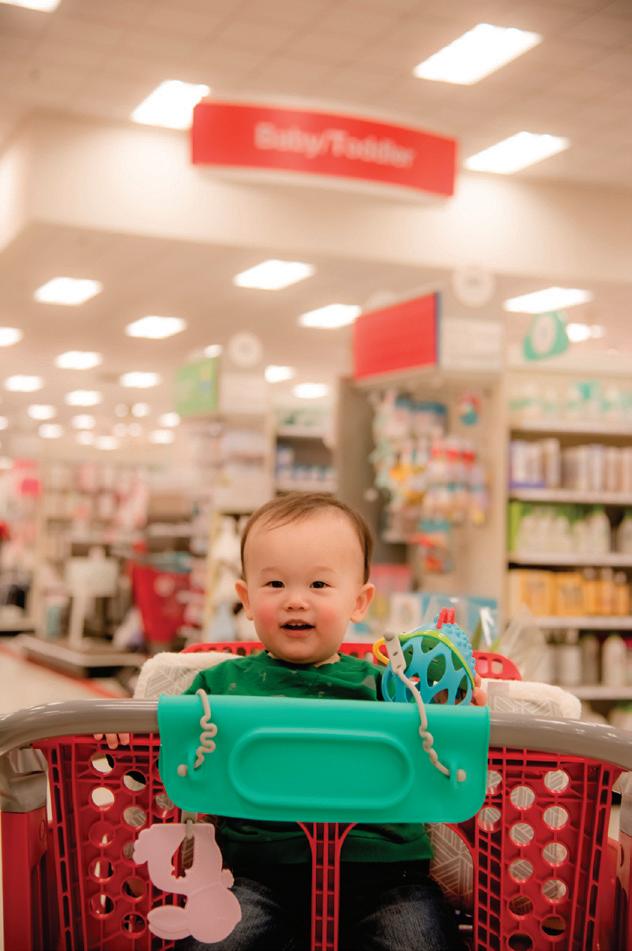

Visit your friend and family go to the gym or shopping and have everything at hand.
Even better, you can recharge your cellphone and with the many pockets you can be assured that security is in place so you will not lose touch with the world or your cellphone.
Our bags come in a selection of assorted colours with added accessories like straps to connect to your stroller or wheel able suitcase, USB connection for your cellphone water proof pockets and easy useability for the new mom on the run.

Our mission is to help new parents and babies sleep better and sleep safer. While most parents understand babies sleep better and longer when swaddled, it is important for parents to know when and how to transition from a swaddle to a wearable blanket. We developed the Safe Sleepwear Pathway to help parents make safer choices and help newborn care educators provide parents with a roadmap for baby's first year. The SwaddleDesigns Safe Sleepwear initiative is designed to help hospitals update their Safe Sleep educational program with a pathway for the first eighteen months.

During stage one, the Omni Swaddle Sack® is an easy-to-use swaddle With uniquely- sleeves, the Omni Swaddle Sack is the most convertible swaddle on the market and supports a multitude of arm and hand positions. For babies who prefer one arm out, the sleeve will help keep baby’s arm warm and the mitten cu may be worn open or closed. The cu s may be closed, if the caregiver is concerned about facial scratches. For babies who enjoy sucking on their hand, parents can open one or both mittens to allow baby to self-soothe.
When baby reaches 2-3 months or when baby shows signs of attempting to roll over, the American Academy of Pediatrics urges parents to stop restraining baby’s arms in a swaddle and start using a wearable blanket However, many parents feel their baby is not ready and they continue to swaddle, which increases risk of su ocation if baby was to roll over when swaddled. To bridge the gap from swaddle to sleeping sack there is a new option - the Transitional Swaddle Sack® with Arms Up and Mitten Cu s When transitioning from a swaddle, many babies sleep better with the snugness and unique sleeve design of the Transitional Swaddle Sack, while other babies prefer a traditional wearable blanket. It is important for parents to consider both options, so they can make the best choice for their baby. The goal is Better Sleep and Safer Sleep.
LYNETTE DAMIR, RN, CEO & FOUNDER OF SWADDLEDESIGNS, is known for her stylish, functional & innovative designs to help parents care for and comfort their baby. Please visit SwaddleDesigns.com to learn more.





Daily bathing isn’t recommended as it can dry delicate skin; research shows 2-3 times a week is best. Once baby starts crawling and feeding themselves, more baths may be needed. Pick a time that works best for you both. Some babies are energized by baths, others become relaxed and sleepy.

First, get everything ready, including an infant tub or basin, warm water for bathing and rinsing, infant-skin-friendly cleanser, towels and clothes. Then, undress baby and begin their bath.
For a sponge bath, keep baby wrapped and use a clean baby washcloth rinsed in a basin of warm water, exposing and washing one body area at a time while keeping everything else covered.
For a tub bath, immerse baby from birth into a tub filled with warm water just deep enough to cover their shoulders. When tub bathing:
✿ Place a warm washcloth over baby’s body; this soothing and relaxing technique keeps your baby’s temperature stable
✿ Use a baby washcloth, which is usually softer and smaller than a regular washcloth to avoid skin irritation
✿ Always support baby’s head and neck with your hand and forearm
Prevent skin irritation by using a mild preservative- and fragrance-free cleanser with a neutral pH designed specifically for baby’s delicate skin. For baby’s face, water alone is enough. Wipe baby’s eyes only when needed, gently wiping from the inside to the outside, using a clean part of the washcloth for each eye.
✿
Bat HI ng Bas I cs
Wash from the cleanest areas to the dirtiest: Start with the face using water alone; end with the diaper area.
Cleaning genitals requires special attention: Baby girls may have an egg white-like discharge, which is perfectly normal and doesn’t need to be removed. Always clean from front to back and use a clean area of the washcloth each time to help prevent infection. For boys, lift the scrotum to get all of the creases clean.
✿
Remember to rinse! Always use rinse water you’ve prepared and that is warm; never use running water from a faucet or sprayer as water coming out of your sink can vary in temperature.
Every parent has questions about bathing their baby—you’re not alone. Here are the most common questions nurses receive—and our best advice. Suds up!
✿ Pat baby dry with a soft, warm towel; avoid rubbing vigorously
n ever use powders on your baby, which can be inhaled and lead to breathing problems.
s kip cotton swabs, which can damage the ear canal and eardrumRita Nutt, DNP, RN, is an expert adviser to Healthy Mom&Baby
That the routine actions of moving, touching and caring for your baby and their skin during a diaper change could create trust, connection and a surge of positive emotions that support baby’s overall health and wellness? That idea alone would turn a rote task into a mini masterpiece!

Diapering can be enjoyable and beneficial for baby—not just endured— say the experts of the Huggies® Nurse Advisory Council. Their new program, Every Change Matters: A Guide to Developmental Diapering Care, explores the research regarding how the very simple act of diapering provides healthful and developmental opportunities for bonding, attachment, closeness, stress reduction and comfort between you and your infant.
You’ll change as many as 10,000 diapers before baby transitions to a potty. Isn’t it nice to know you have the opportunity to also help baby grow stronger and healthier during these times? During baby’s first days, you’ll change up to 12 diapers a day—that’s up to 12 opportunities to hug your baby close to you, connect, bond and form fun rituals together that turn the ordinary task of diapering into something extraordinary.
Mindful Mo M ents during d iaper t i M e Diapering is the perfect time to practice mindfulness in your care habits. Mindfulness means being completely engaged in the present moment. It’s
taking your life off autopilot; paying attention to each and every second with your baby; and becoming aware of baby’s moods, movements, expressions and most importantly, baby’s cues. Like any good habit, it takes practice.
Create a sensory symphony at each diaper change with your soft voice, gentle touch, slow and careful movements, and with a sing-song voice sweetly talk or sing to baby. Keeping one hand on baby during diapering is a safety measure but also becomes a reassuring touch, especially if baby should startle or move suddenly.
Smile at baby. Create calm and happiness by gazing into baby’s eyes— spend a few moments making that emotional connection. Babies love to look
What if you learned that the everyday act of diapering could promote and support your baby’s health and development?
at and interact with others, and research tells us that they quickly recognize and enjoy seeing family members, especially their parents.
Regularly hug, touch and love your baby—every diaper change can begin and end with a hug! When you’re relaxed and engaged, baby feels connected—your bond—through your touch and attention. Your calm demeanor during diapering reassures and calms baby, helping them feel comfortable with the movements, cleansing, diapering and dressing that go into changing baby. Your focused attention and touch are what baby needs to flourish and thrive—so don’t forget to give your baby another hug when diapering time is over!
Dia Pering S Pace S
Practice this intentional closeness in a clean and safe diapering space. Change baby where you can easily see and reach them, and have all of your diapering supplies at hand. Keep in mind babies can move and squirm, even at very young ages. They can push off a surface with their feet, too, so always keep your hand gently on your baby during diapering. Safe diapering spaces include:
B Changing table or a safe, firm, flat surface
B Changing blanket or spread to providea barrier between baby and the diapering surface
B Hand sanitizer for you to use before and after diapering
B Super-absorbent diapers
B Skin-friendly baby wipes
B Protective barrier ointment
B A change of clothes, if needed
B A trash basket or diaper bin with a lid to mask odors
Changing 10,000 diapers may feel like an impossible task at first, but when every diaper change is approached with the physical and emotional desire to connect and bond with baby, it becomes another way you’re supporting baby’s best health and development.

Charlotte Wool, PhD, r N, is a nurse educator and an expert adviser to Healthy Mom&Baby. Development of this article was supported with funding from Huggies®.
Your baby benefits from every diaper change when you practice these 5 habits shown in research to benefit baby’s growth and development:
B Create a calm and clean diapering environment through good hygiene and supplies at the ready
B Change and check baby regularly, such as every 1–3 hours during the day and at every feeding

B Comfort baby by moving slowly through the diaper change to minimize any stress or discomfort
B Champion sleep by practicing skin-to-skin care at bedtime and using diapers with wetness indicators to avoid disturbing baby’s snoozing
B Cherish confidence and closeness that come from learning your baby’s cues and responding to baby’s needs, such as for a clean, dry diaper where it’s gappy
Source: Adapted from Huggies® Every Change Matters: A Guide to Developmental Diapering Care
have been designed to stimulate baby ’s gums and promote healthy teething. The suave ergonomically designed pattern of textures on each teether kindle an awareness to various shapes while appealing to the five senses.


Imagine this: your child is happily playing in the living room when the phone rings. You take your attention from your baby for just a few minutes while you chat with the caller.
When you return, it’s your worst nightmare: your child is lying there, unresponsive, after suffering a shock from the electrical outlet. If this sounds like a rare scenario, think again. In the last decade, over 24,000 children under age 10 went to the emergency room for an accident involving an electrical receptacle. That’s seven children a day.
Protect your child with the help of an outlet safety device like Plug Perfect. Plug Perfect is a fail-safe device that completely secures dangerous outlets from prying fingers.

Simply screw on the Plug Perfect over your existing outlet plate and snap on the clips. Your child won’t be able to stick their fingers in the outlet or pull cords out of the wall, preventing the risk of first and second-degree burns. Plus, the slim profile allows Plug Perfect to fit any area unnoticeably.
Try the Plug Perfect today to get the peace of mind you deserve.

Why does your baby flail all of a sudden? The answer lies in the Moro reflex.
Babies are born smart. Almost immediately, your little angel instinctively grasps a finger or roots for a breast. These actions are intuitive and are examples of newborn reflexes. All babies are born with innate reflexes: rooting, sucking, walking and the Moro reflexes, which is why your baby may startle suddenly.

Of these, the one most parents are curious about is the Moro or the “startle” reflex.
Experts think that the Moro reflex evolved to keep babies closer to their caregivers, and to prevent falling.
When a baby exhibits the Moro reflex, his body will tighten, his arms will move sideways palms up, and his thumbs will jut out. It looks like flailing, and for a second, baby is flailing! He may cry or not. And then, just as quickly as it happened, baby will relax, and fold his arms back to his body.
Some babies will startle for no apparent reason. Most babies, however, will startle in response to a loud noise; a change in body position, a sudden movement (anything that feels like falling); a change in environmental temperature; or an unexpected touch. It’s absolutely normal for babies to exhibit the Moro reflex. If your baby cries when startled, keep him more comfortable by swaddling or holding him close.
Babies tend to exhibit the Moro reflex most from birth through age 5 weeks, at which point
you may notice baby startles less frequently. This reflex will diminish through time and should completely disappear by 4-6 months of age.
During baby’s 1st physical exam, baby’s healthcare provider will seek to create the Moro reflex by placing baby, face up on a soft, padded surface, such as a crib or bassinet. She will then extend baby’s arms above her torso while holding baby’s hands. She will support baby’s weight just enough to lift baby’s head gently and then suddenly release it, allowing baby to fall backward—just for a split second! Don’t worry; this is perfectly safe with an experienced healthcare provider.
What baby’s healthcare provider wants to see is whether baby exhibits the Moro reflex on only one side of his body, which could mean baby may have a broken shoulder (clavicle) bone or an injury to the group of nerves running from the lower neck and upper shoulder areas (brachial nerves). These injuries usually occur during birth, particularly with full-term babies weighing more than 8 pounds.
The lack of a Moro reflex, or an abnormal Moro reflex, is more worrisome than a reflex that occurs on only one side of the baby’s body as it could mean that there could be damage to baby’s brain or spinal cord.
Jennifer Lemoine, Dn P, APrn , nn P-BC, is a neonatal nurse practitioner, an assistant professor at the University of Louisiana at Lafayette, and an expert nurse adviser to Healthy mom&Baby.
What if i see a C hange in my baby’s m oro reflex? healthy babies
i f you notice a change in baby’s m oro reflex contact baby’s healthcare provider immediately. She will likely want to perform tests to determine the cause. She may also want to know:
B i f there were any problems or events that happened during labor and birth
B Detailed family history
B Any other new or unusual infant behaviors
it’s normaltotallyfor babies suddenlyto startle.









first 4 months.
Children reach milestones in how they move, play, speak, respond and behave. Skills such as smiling, laughing, playing peek-a-boo, crawling and walking are called “developmental milestones.”
Milestones can occur at diff erent rates and stages in baby’s development. Experts have created guidelines, like the ones in this article, to help you know what to expect of babies of a similar age.

You are the most important person when it comes to baby’s learning.
ere are many things you can do to help your baby grow and learn during each stage of development. e American Academy of Pediatrics recommends that all children be screened for developmental delays and disabilities during regular well-child healthcare visits at 1, 2, 4, 6, 9 and 12 months after baby’s birth. Your baby may need more screening if they’re considered at risk for developmental problems from being born too early or having low birth weight, for example.
As a parent you know your child best. If you have questions about how your baby is behaving or growing, let your baby’s healthcare provider know immediately. Don’t wait—if indeed there is a problem, it’s important to get your baby help as soon as possible.
Express comfort and discomfort, enjoyment and unhappiness
Cry, smile, wiggle, fuss and use facial expressions
Enjoy soothing
Learn to close their eyes, suck on a fist or turn head away from distractions
Be quiet when you rock, sing, talk to them
Respond when they cry
Give smiles, hugs, and other warm physical contact to help baby feel secure

Calm herself
Show interest in adults she knows
Close their eyes when they’re sleepy
Fuss, cry, or coo to initiate interactions
Turn to voice that is familiar Smile when seeing or hearing a person they recognize
Show awareness of other children
Mimic children they recognize with facial expressions, noises or body language
Show baby your face and talk or hum softly Place your hand on baby’s stomach or back Pick baby up and gently rock
Make eye contact with baby regularly
Use gentle facial expressions and tones Play “peek-a-boo” with baby
Place baby near others when awake
Let baby watch and interact with children of all ages in a supervised setting
Turn their head toward a familiar caregiver
Look in the direction of your voice
Speak directly to baby
Make eye contact when talking to baby

Demonstrate an attachment to certain people
Imitate your smile Track your movements
Here’s what baby may be doing during their
Listen and express themselves
React strongly to noise by either being soothed or frightened
Use sounds and facial expressions of pleasure or displeasure
Babble or coo when hearing a voice Appear to “listen”


Turn head to look at you
Recognize and react to the sounds of language
React to a new nursery rhyme by kicking legs; smile when hearing a familiar nursery rhyme

Repeat sounds, enjoy and experiment with different sounds
Coo to conversation
Show momentary attention to board books with bright colors and simple shapes especially faces
Talk with baby directly and faceto-face
Follow their lead, and repeat sounds they’re making Avoid talking loudly
Play different kinds of music Sing and hum to baby
Repeat nursery rhymes, chants, and language Sing songs

Read with baby in your lap Talk about everyday objects
Speak to baby
Begin to build a vocabulary
React to colors and shapes by cooing or moving their hands
Begin to understand that they can make things happen
Play with their hands
Explore toys with their hands and mouth
Turn their head to follow objects
Turn their head toward loud noises
Repeat enjoyable actions, such as shaking a rattle


Use many repetitions to move various body parts
Bring hands together to grasp and shake toys
Reach for objects and swipe at dangling objects
Raise their head, arch their body and flex their legs
Begin to try and roll over and sometimes kick themselves over
Read and show baby simple books Name objects
Provide a safe and stimulating environment





Supervise baby on the floor to promote movement
Play “peek-a-boo”
Provide clean, safe toys for baby to hold Smile and give baby your complete attention to help them focus and interact
Push up by hands or forearms when on stomach
Bring their hands to their mouth
Give baby lightweight rattles or soft, bright patterned toys that make soft noise


Have daily supervised “tummy time”
Support baby’s head when holding her Frequently change baby’s position when they’re awake
Elizabeth T. Jordan, DNSc, RNC, FAAN, is Vice Dean, Undergraduate & Global Programs at the University of South Florida and a nurse expert adviser to Healthy Mom&Baby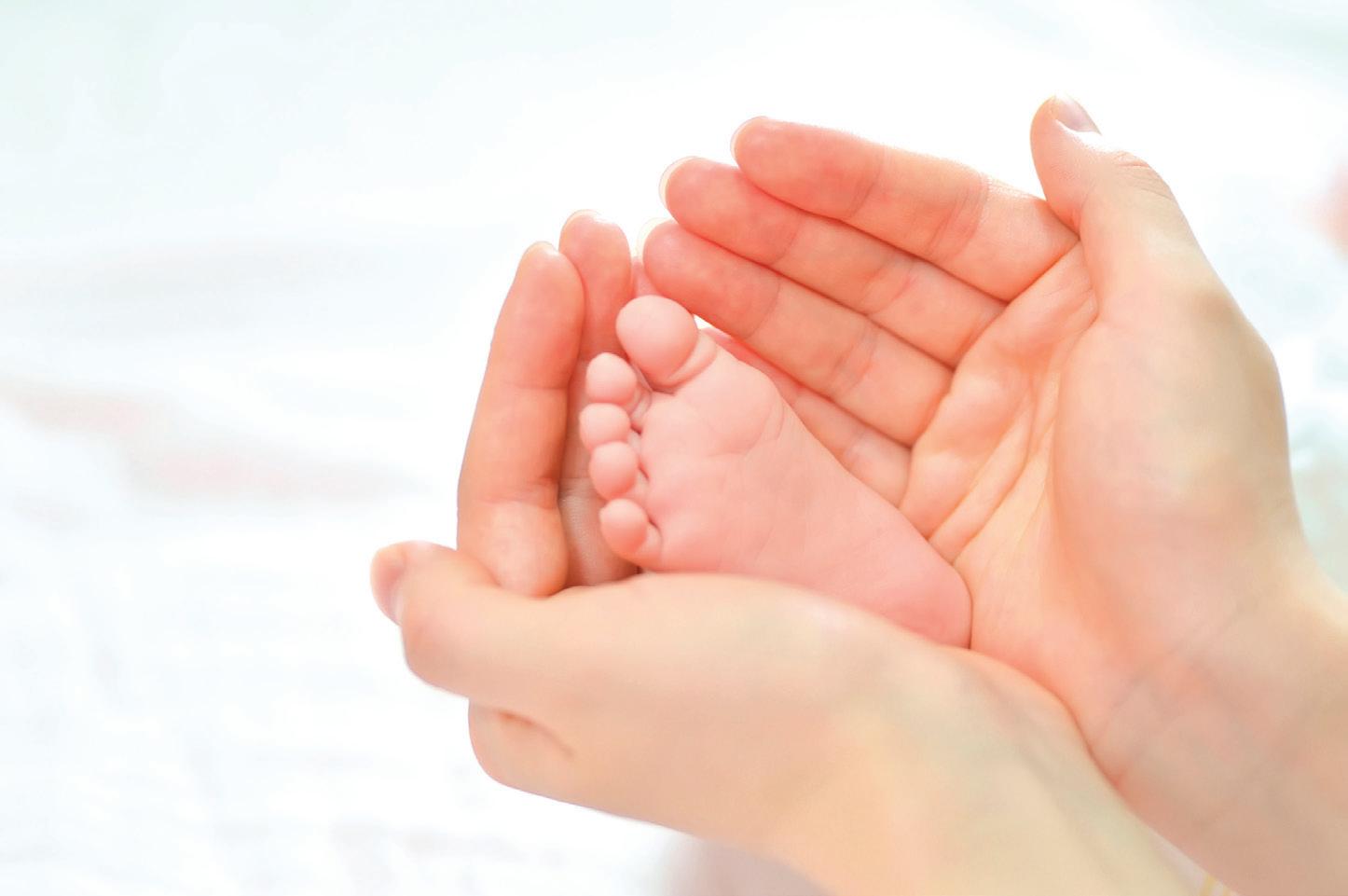

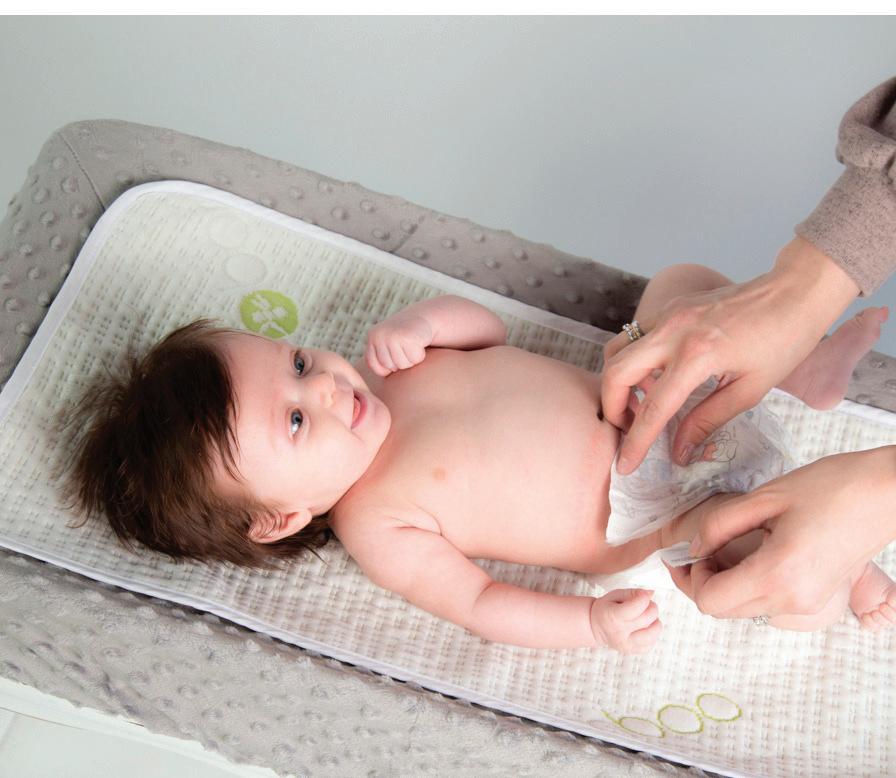








A safe, clinicallyproven solution, SRT applies microcurrent, a solution based on the scientific concept of increasing skin’s inter-cellular metabolism to reawaken the skin’s ability to regenerate and reduce scars. Reducing scar size reduces pain. c-sectionscars.com







New and mature moms are commonly surprised by embarrassing leaky bladders or prolapse after pregnancy. Designed with a unique kinetic feedback mechanism for awareness, and with different widths, shapes, weights, and colors for comfort, Inti Fit’s “wear everywhere”




Premium Kegel Exercise Kit guides moms to restore their pelvic function quickly, postpartum. 10% off at welligion.com/hmbaby Use code “HMBABY”


This Ultimate bra provides excellent support, perfect for any fitness, or just casually.



Cadenshae’s most popular bra, the Ultimate bra provides all the comfort and support bigger busted moms need to be active and breastfeed anywhere, anytime. cadenshae.com













Baby Ddrops® is a purified vitamin D3 supplement for babies, specifically designed for breastfed infants. Apply just one drop where baby feeds, or onto a clean surface like a washed fingertip. There’s no taste, so Ddrops don’t interfere with feeding. vitaminddrops.com






5
Want to improve your breastfeeding experience?
Milkease is a natural breastfeeding tool that helps relieve clogged ducts and reduces time spent pumping. What a perfect gift for expecting moms! Limited time, save 10% on Amazon with “10HealthyMB.” Available on Amazon and themilkease.com

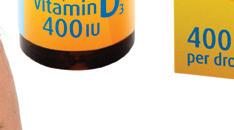




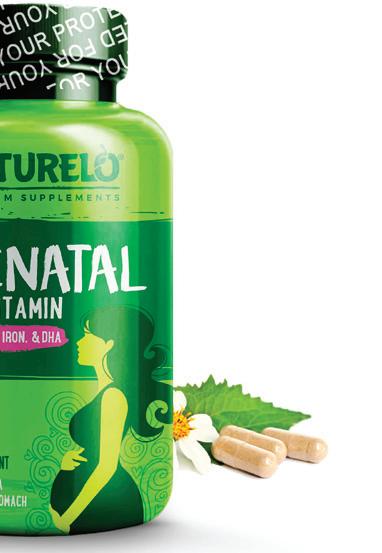
You want only the best for your baby. So why buy synthetic vitamins, when you could take natural, plantbased multivitamins made with organic whole foods? The NATURELO Prenatal Multivitamin provides Folate, Iron, Plant Calcium and DHA to support mom’s health and nourish the baby’s brain, heart and bones. naturelo.com/newmom
Mortimer the Moose has colorful, satin, knottie legs and multiple textures on his hooves with fun crinkles and jingles. His large, textured antlers are perfect for teething and his body is made of super soft material that baby will love to touch. Mortimer’s squeaker tummy and clacking tail rings add extra fun and exploration for baby that stimulate the senses. tomy.com




















Foodie names for babies are on the rise according to our good friends at Baby Center, which dishes up the top trends in baby names each year. Mealtime monikers now steaming ahead in popularity include...











































 BY CAROLYN DAVIS COCKEY, MLS, LCCE
BY CAROLYN DAVIS COCKEY, MLS, LCCE






























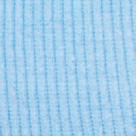























































Could it be pregnancy cravings or an increasing penchant for foodie experiences that’s stirring parents to name their children after incredible edibles?








Prebiotics aren’t just for parents. A full-spectrum prebiotic can fertilize the good bacteria you pass on to your baby during the birth process. A healthy gut microbiome creates harmony between your probiotic bacteria (live organisms) and the prebiotic bacteria (soluble fiber) that feed them in your colon. Eating nutritious food such as fruits and vegetables, whole grains, lean protein and plain Greek yogurt may help you avoid digestive stress, strengthen your immune system and increase calcium absorption, for both a healthier mom and baby.
Breast milk serves as a prebiotic. It contains human milk oligosaccharides or HMOs that can’t be digested in the small intestine. HMOs are the third most abundant ingredient in breast milk after fat and carbohydrates. The HMOs travel intact to the colon, where they stimulate the growth of healthy bacteria that support a baby’s immune system. Since the gut is where 80% of the immune system exists, a baby with a healthy amount of bifidobacteria can have a great start on good health for life!
If you are not able or choose not to breastfeed, or had a C-section, you can still make sure your child has a good balance of microbiome bacteria. Numerous research studies find that children who receive chicory root based inulin and oligofructose (the ingredients in Prebiotin) as a supplement show improvements in growth of healthy bacteria such as bifidocolonies in the gut. With your doctor’s support, an easy solution may be the addition of oligofructose-enriched inulin (Prebiotin Prebiotic Fiber) to your baby’s formula.
As your child grows, supplementing a healthy diet with Prebiotin may start them on a path to a balanced gut microbiome (the collection of microorganisms living in the gut). These lifelong benefits may include:
An improved immune system
Improved bowel regularity and decreased constipation
Increased calcium absorption for strong bones
Better appetite control and less obesity
Help with heart and brain health

Studies have shown that Prebiotin is both safe and beneficial for infants and children. Our prebiotic fiber contains only two ingredients, inulin and oligofructose, both natural food ingredients derived from chicory root, the most medically researched prebiotic fiber available. That’s why Prebiotin is the choice for many clinical and university research institutions, some funded by the NIH.

We always recommend consulting with your pediatrician or health professional when making dietary changes. Feel free to contact us at 855-good-gut for more information and visit us at www.prebiotin.com/kids.
This product is not intended to diagnose, treat, cure or prevent any disease.
Photography credit Jenna Elliott – One Eleven Photography.






















